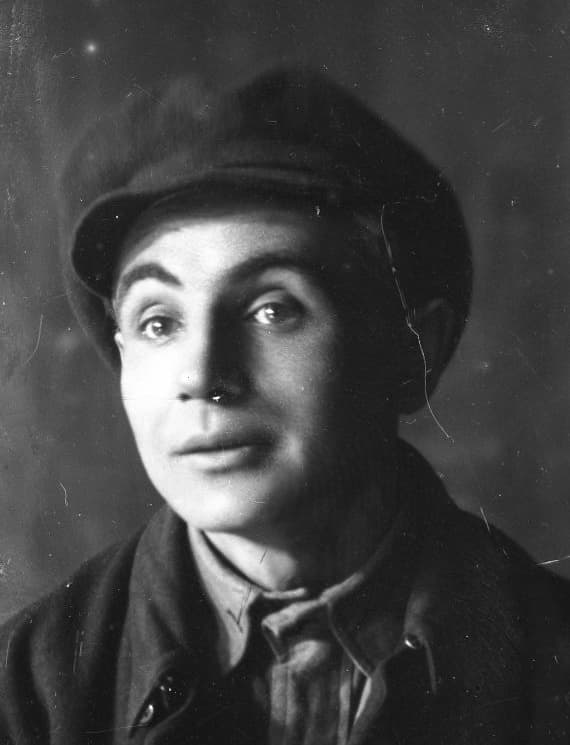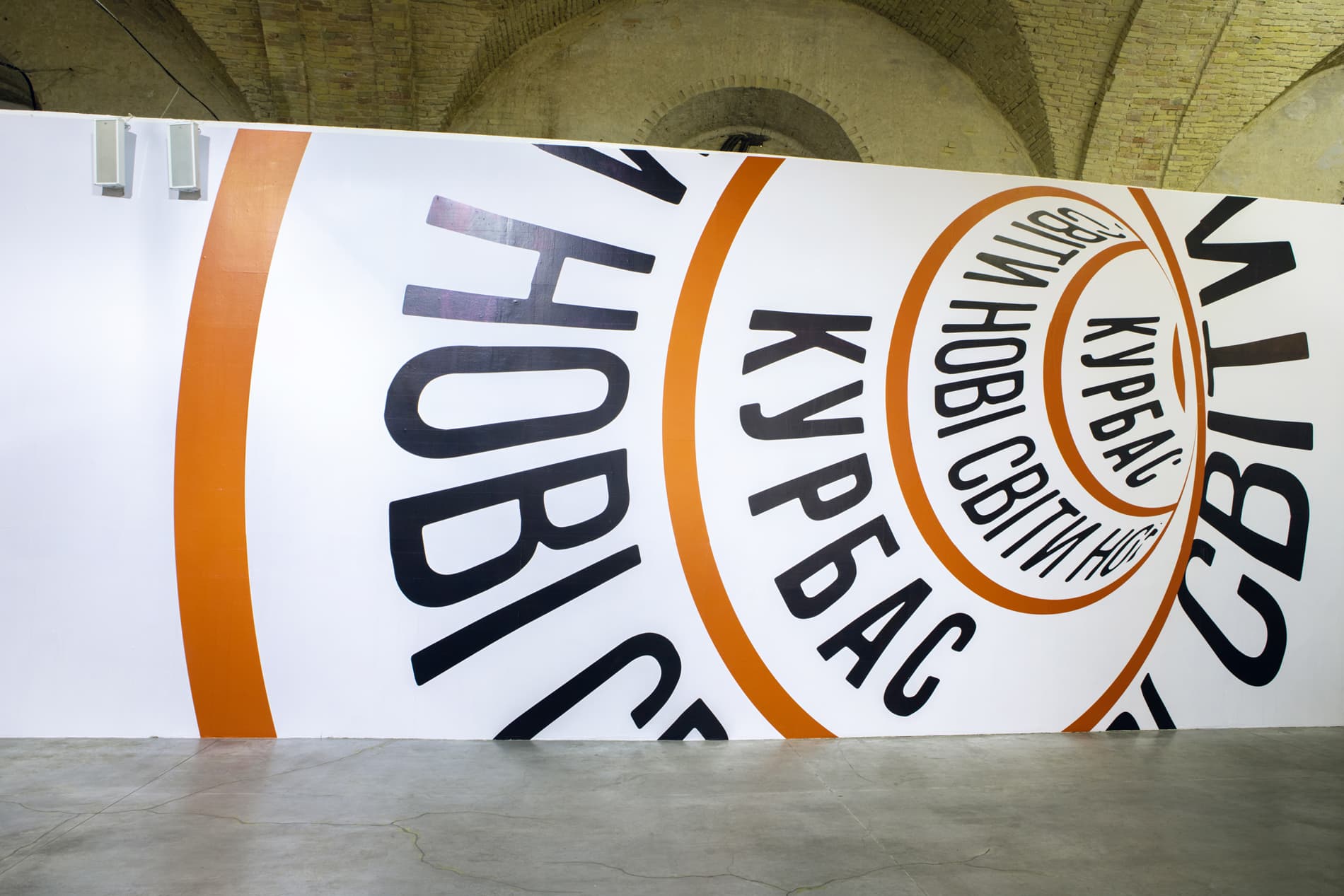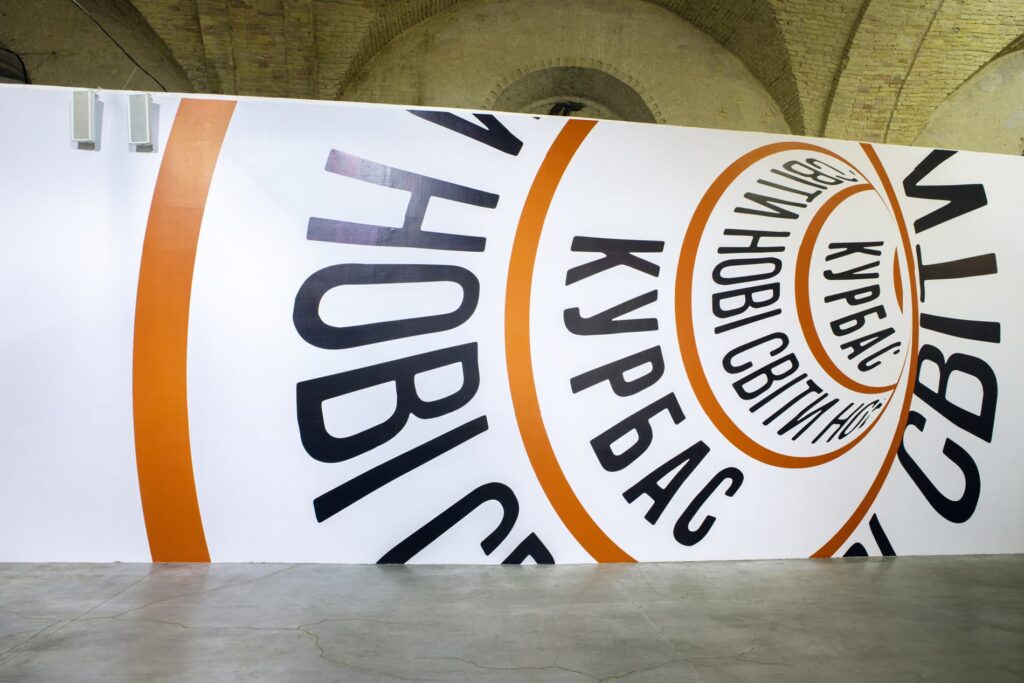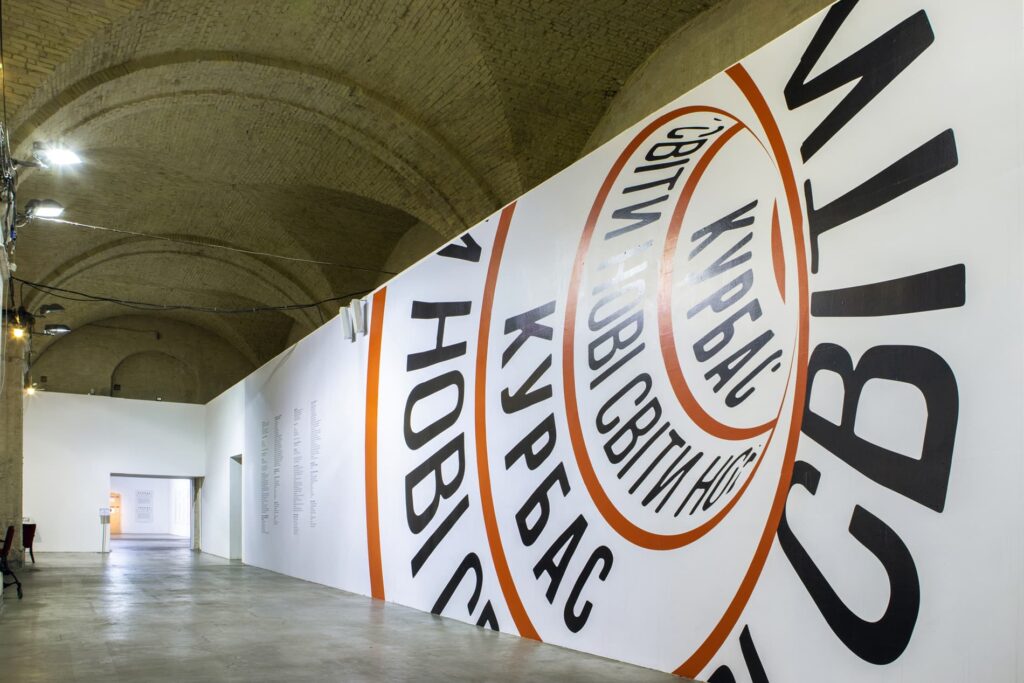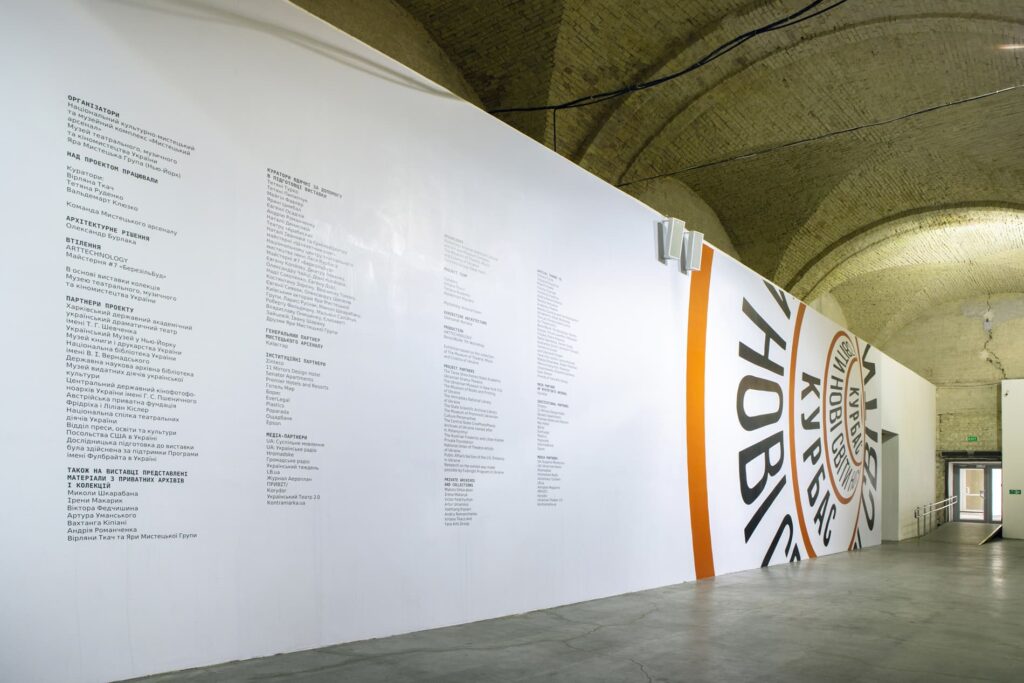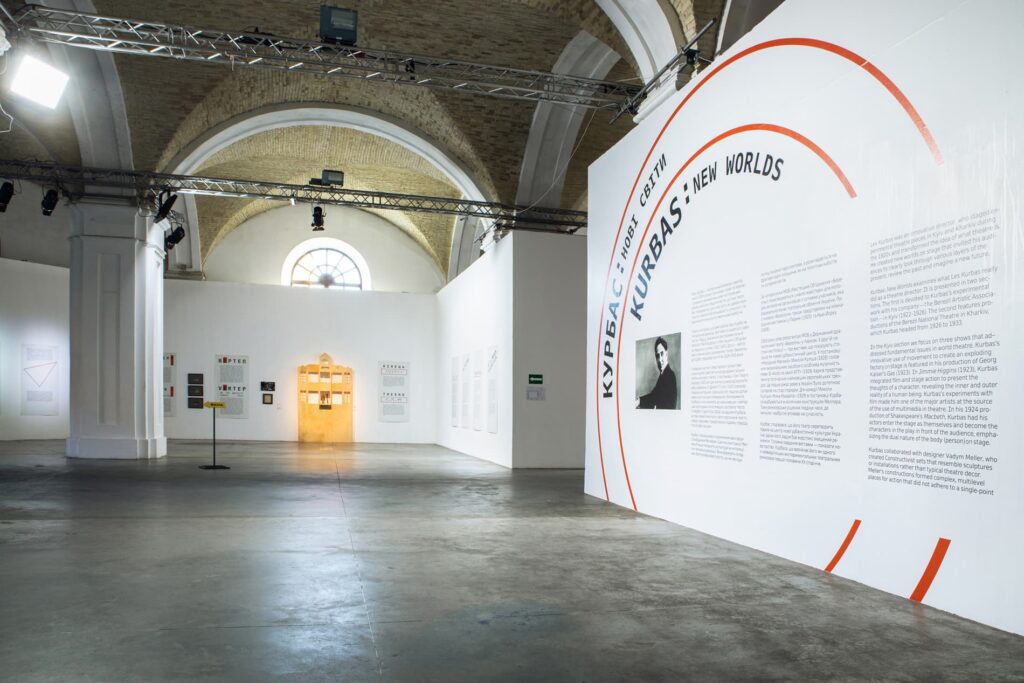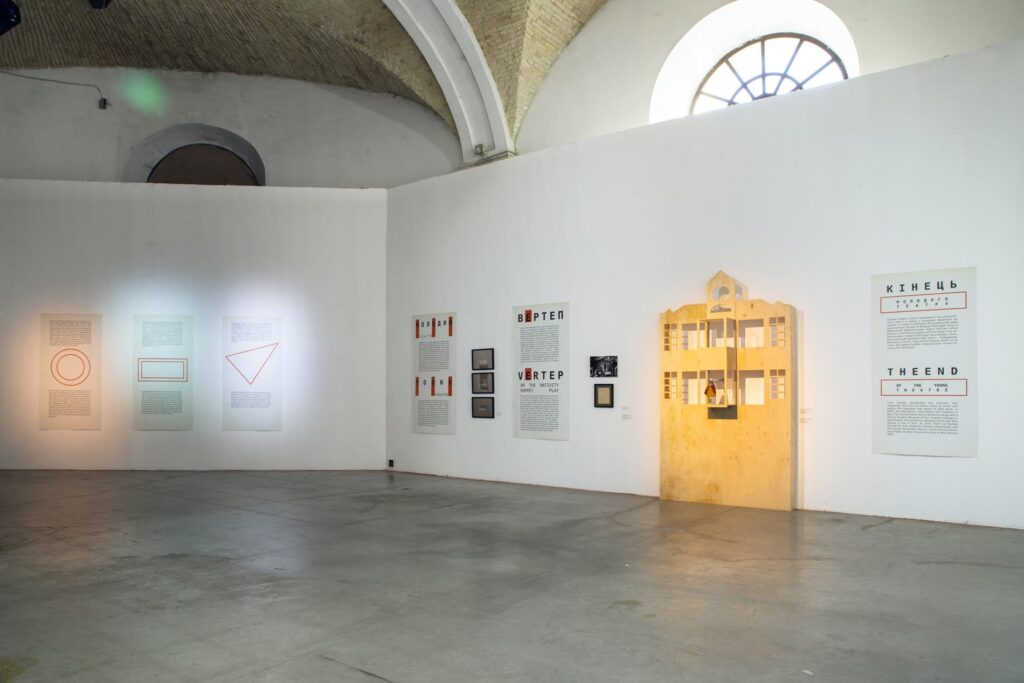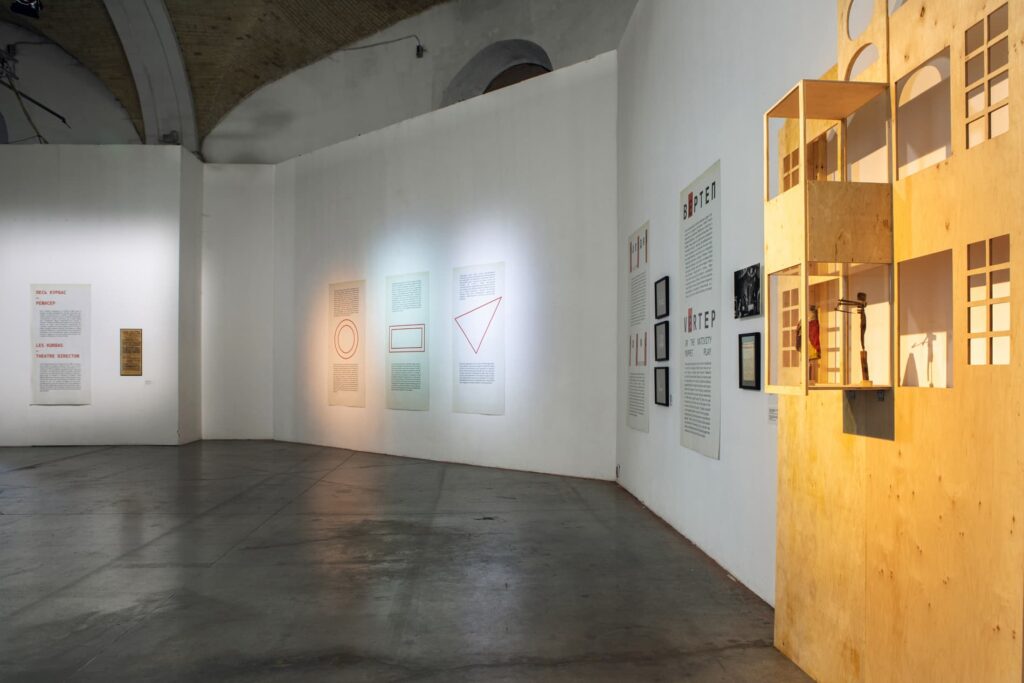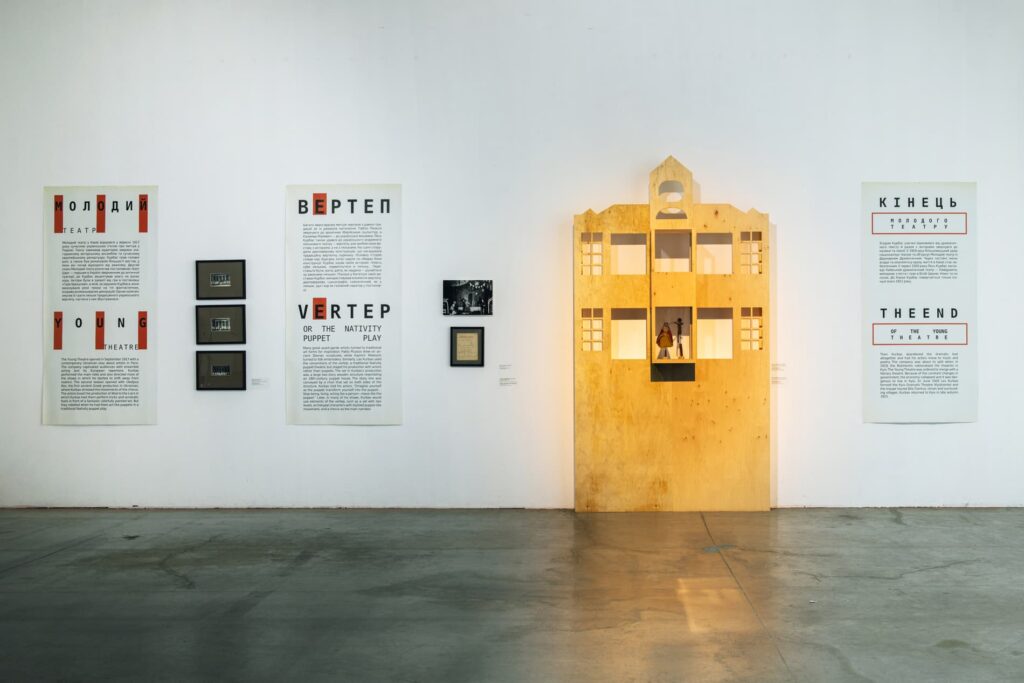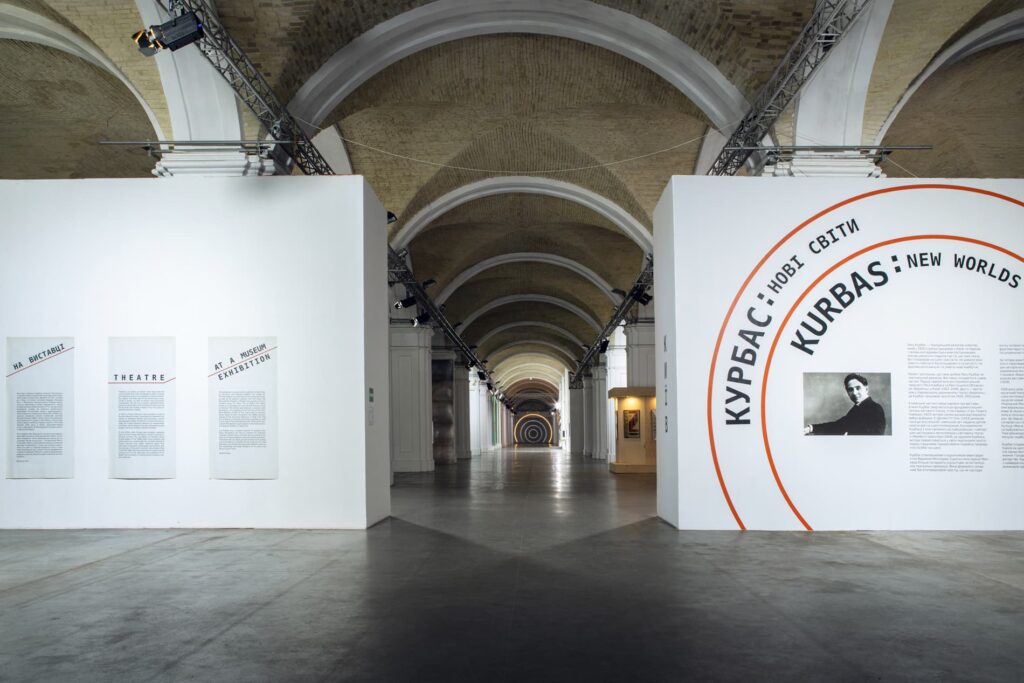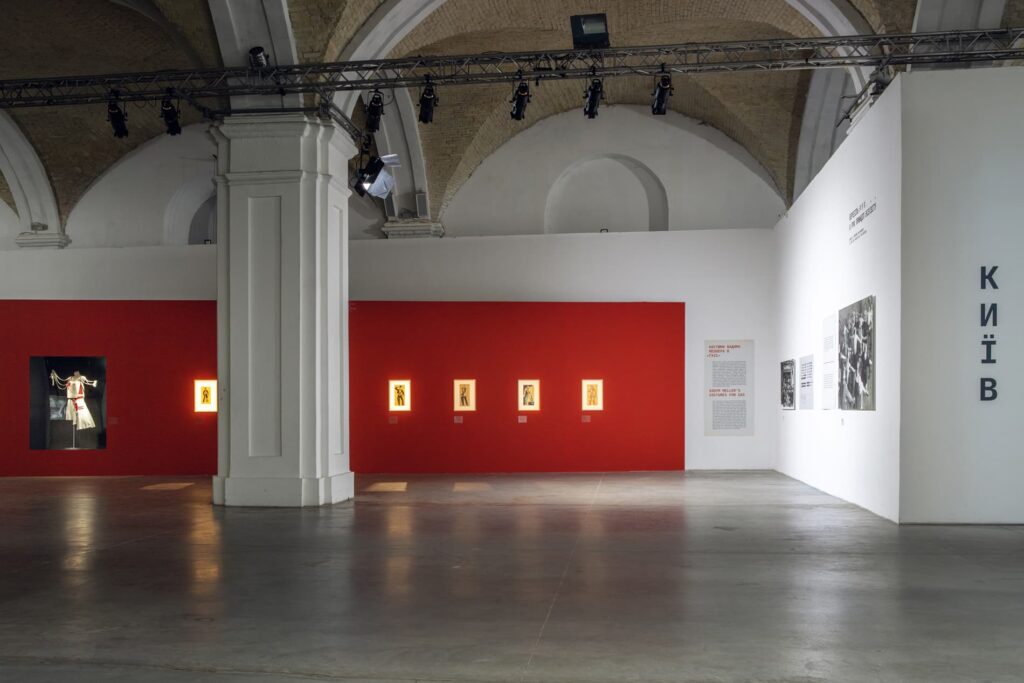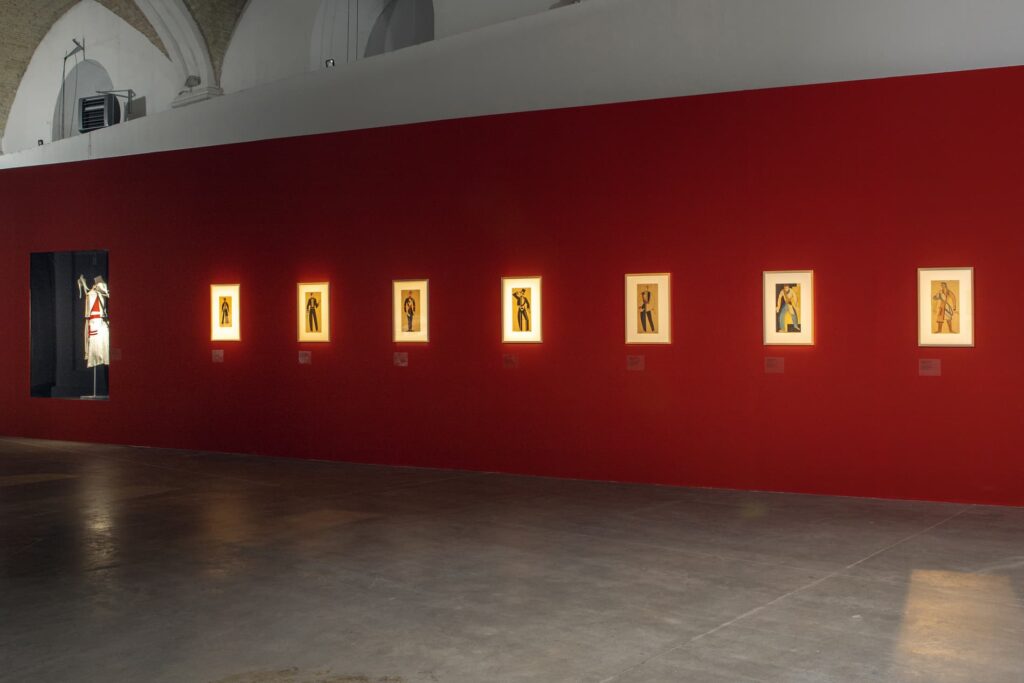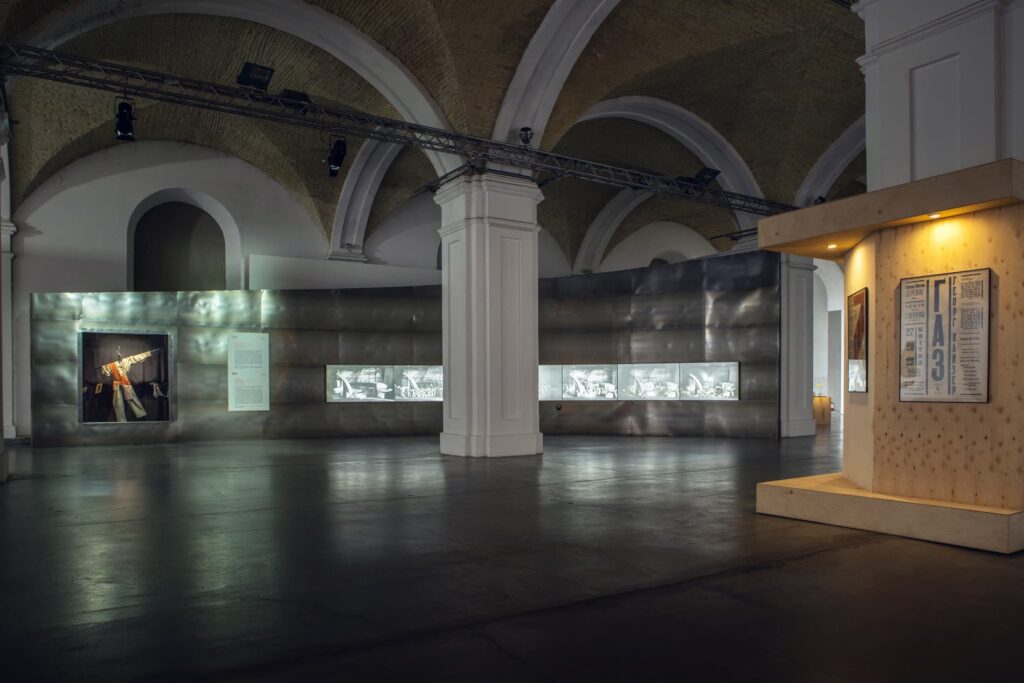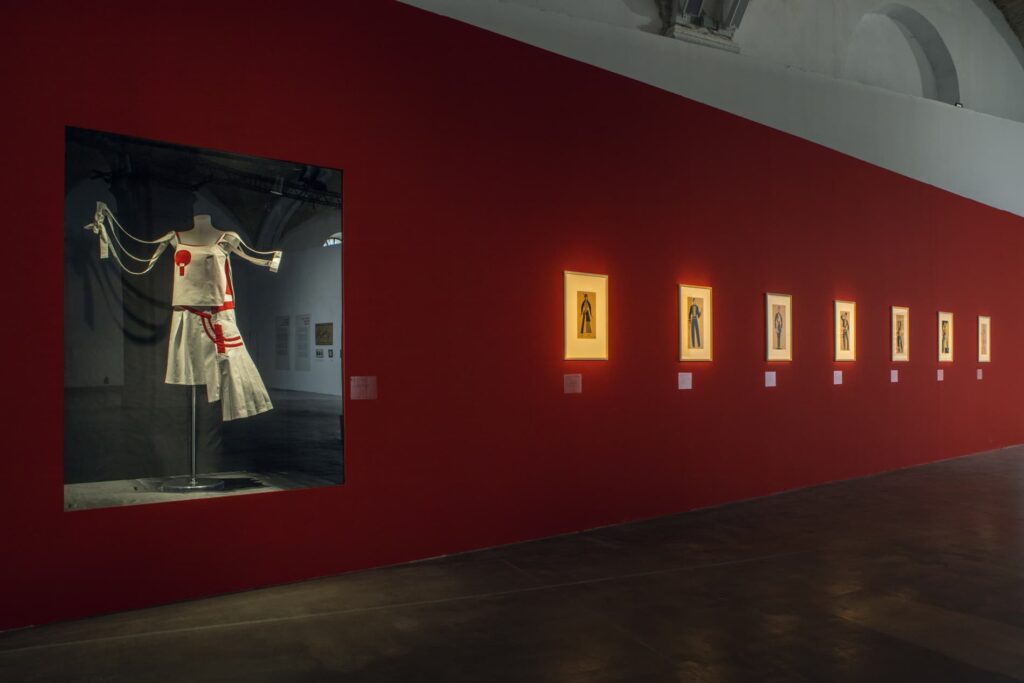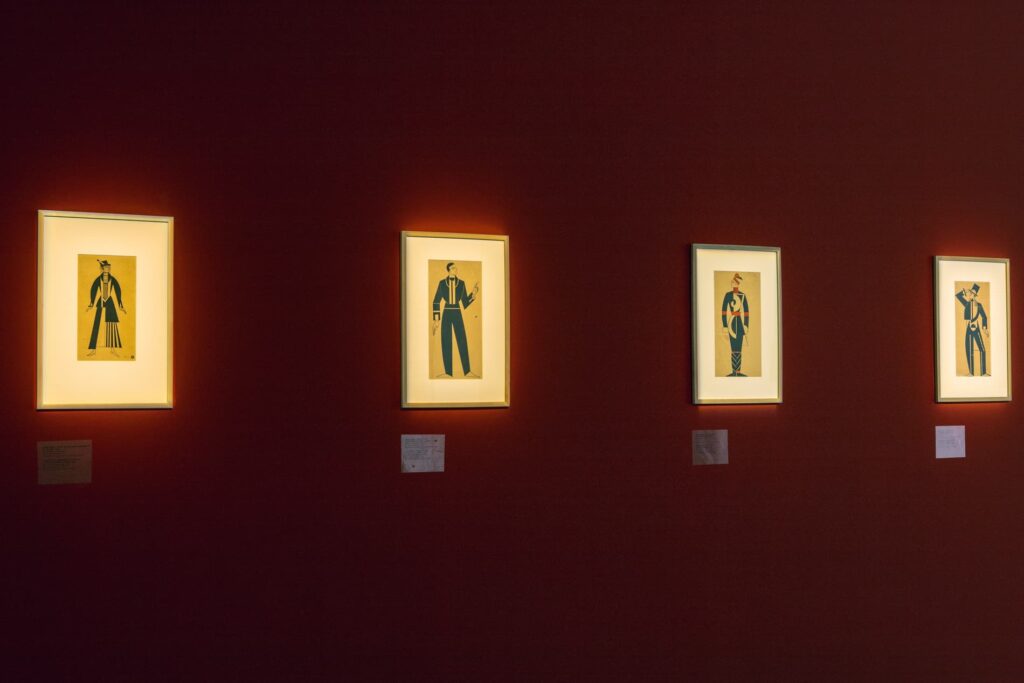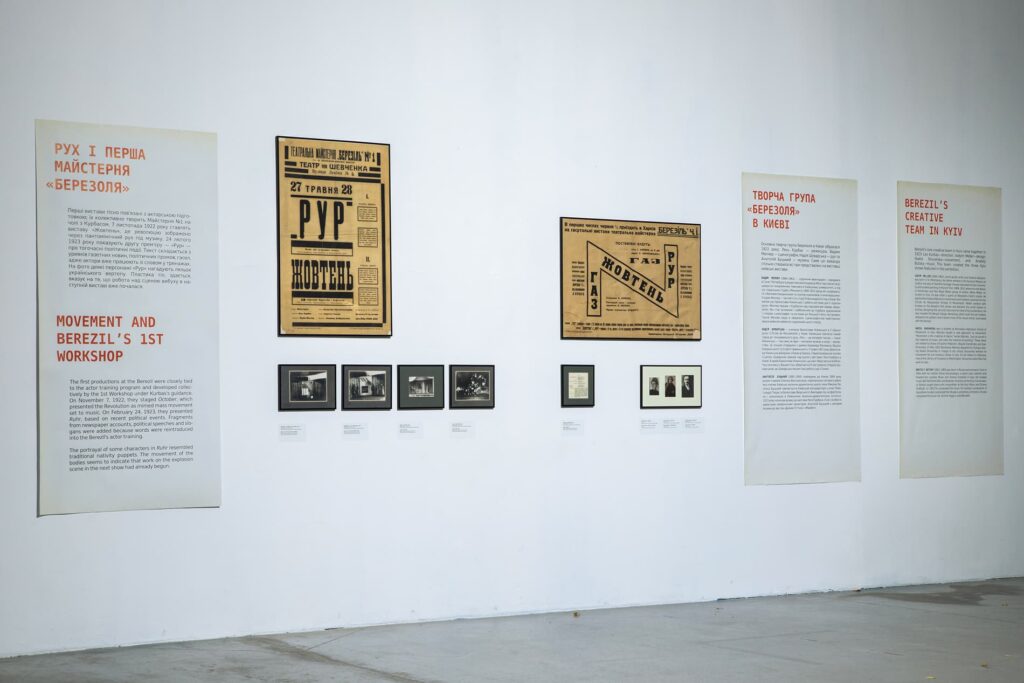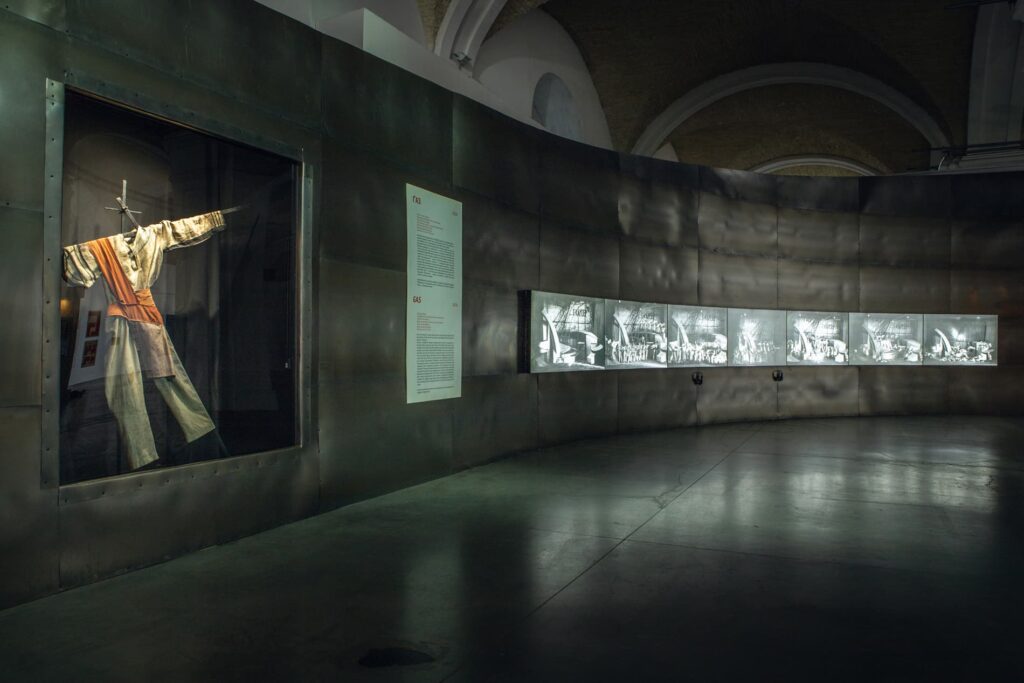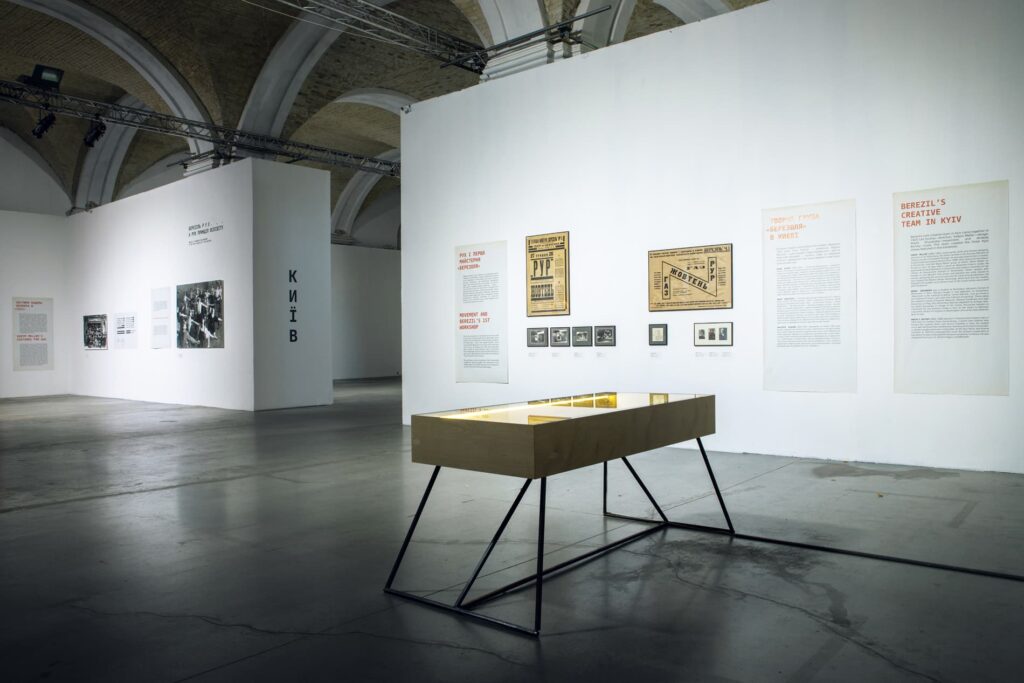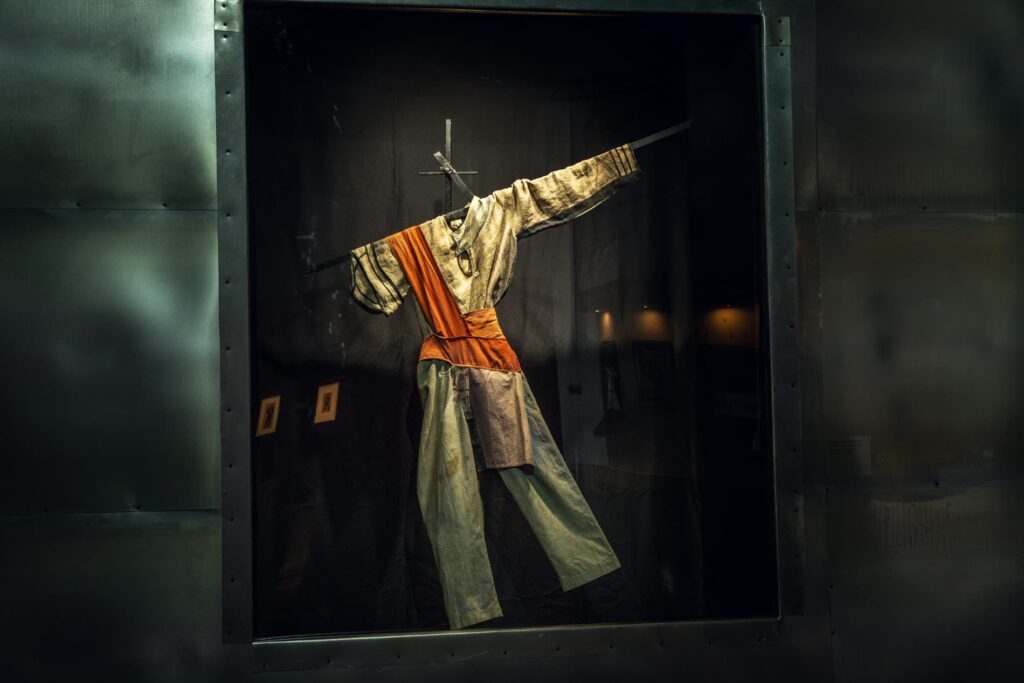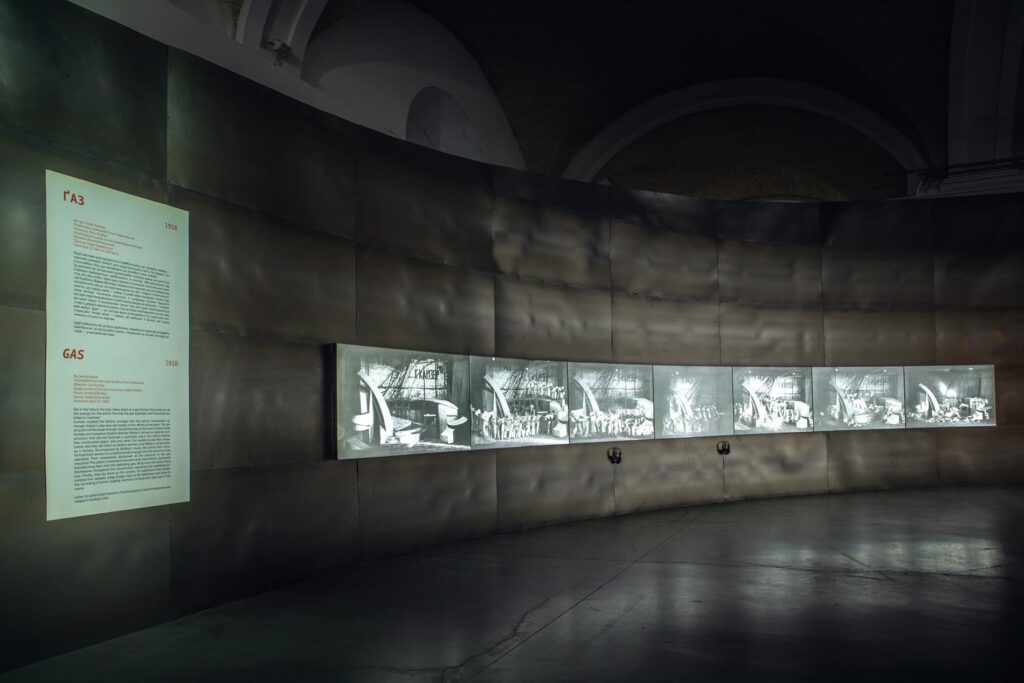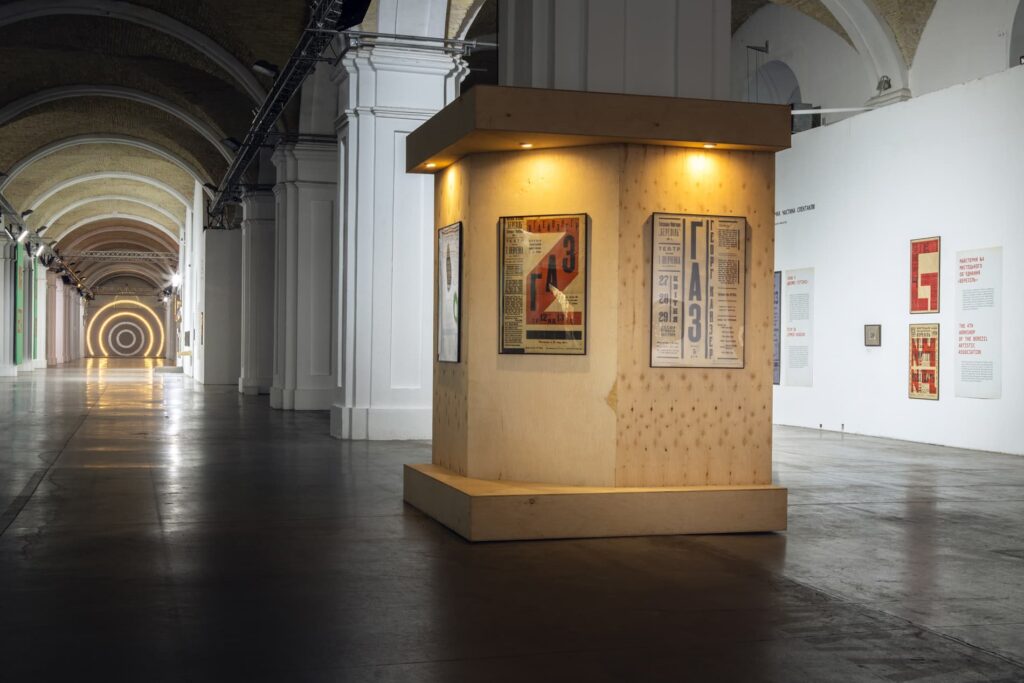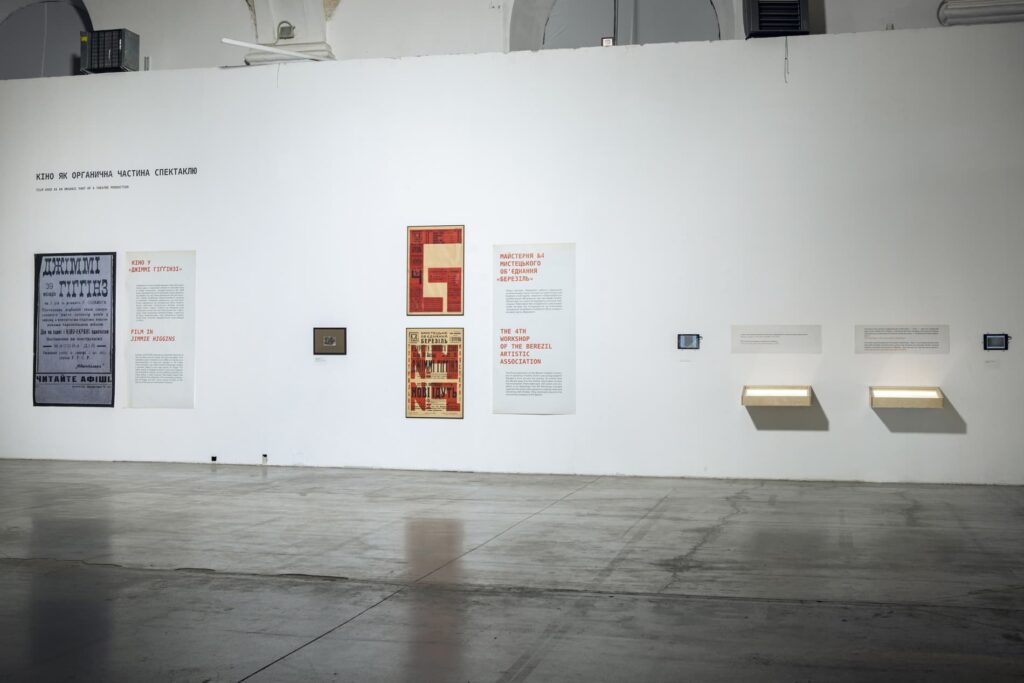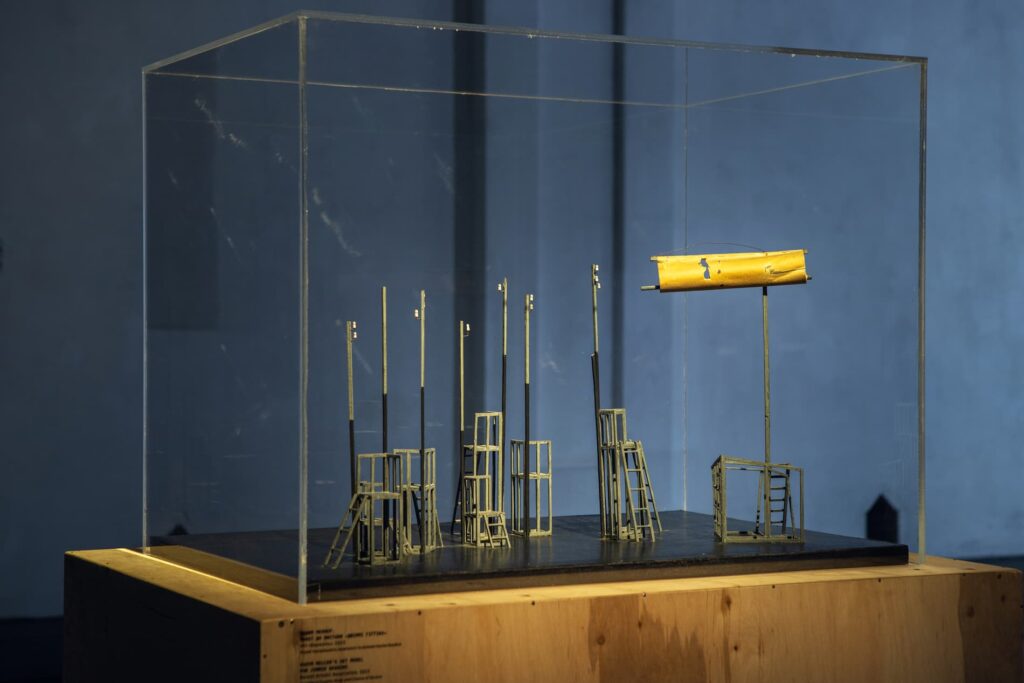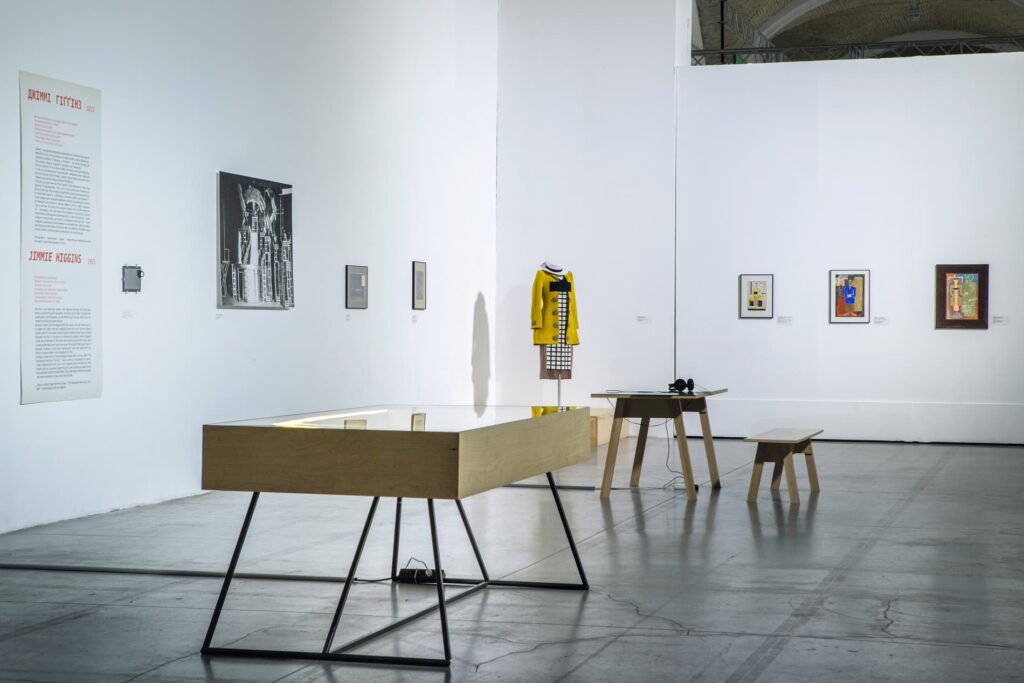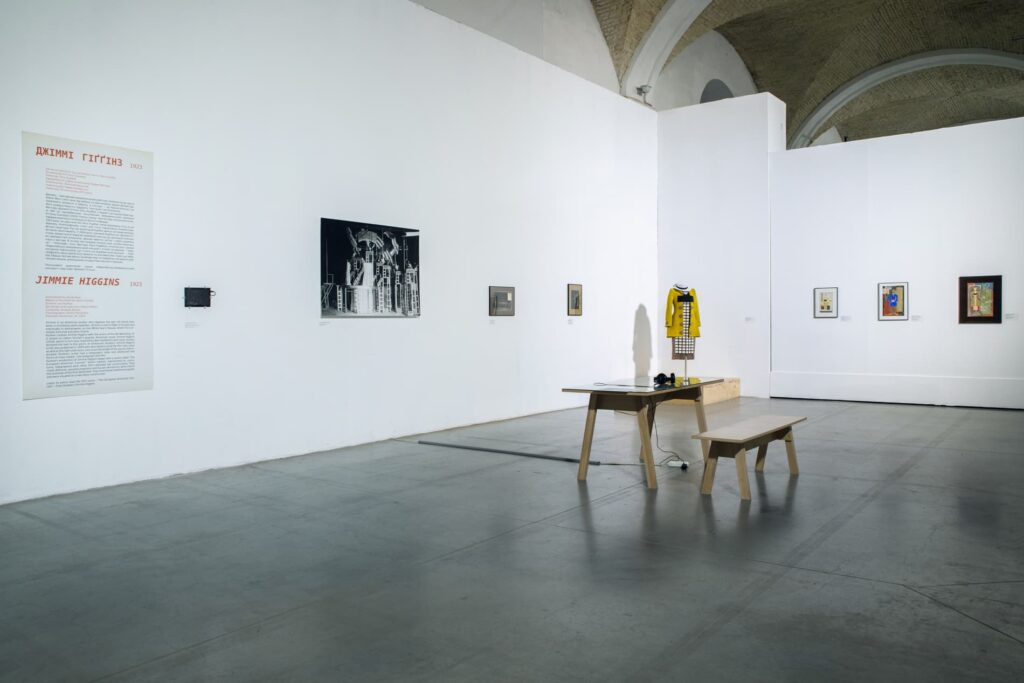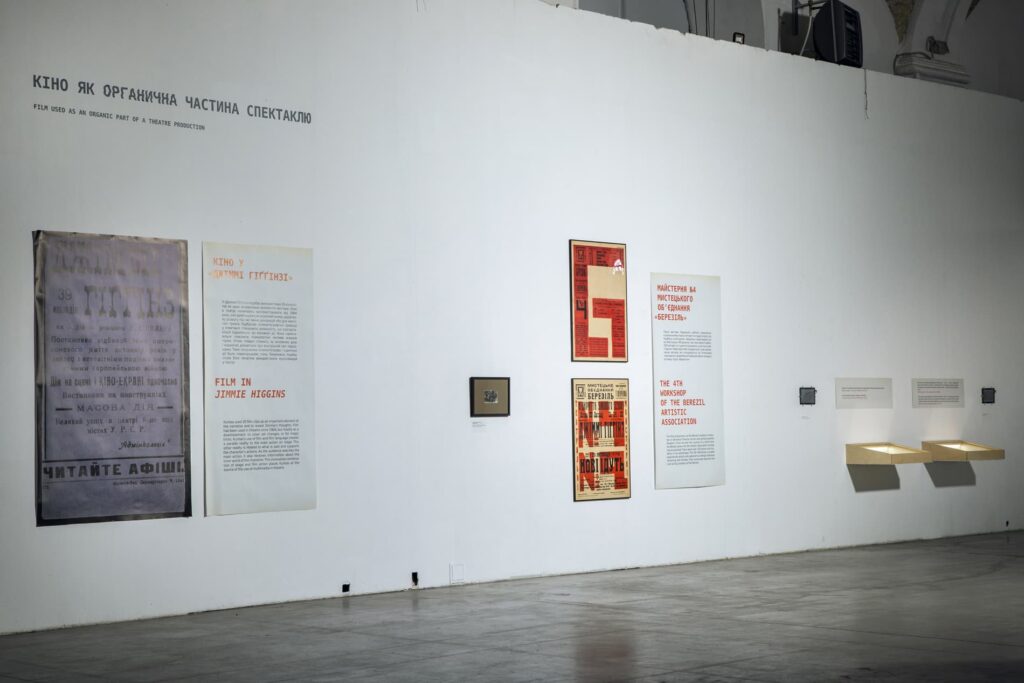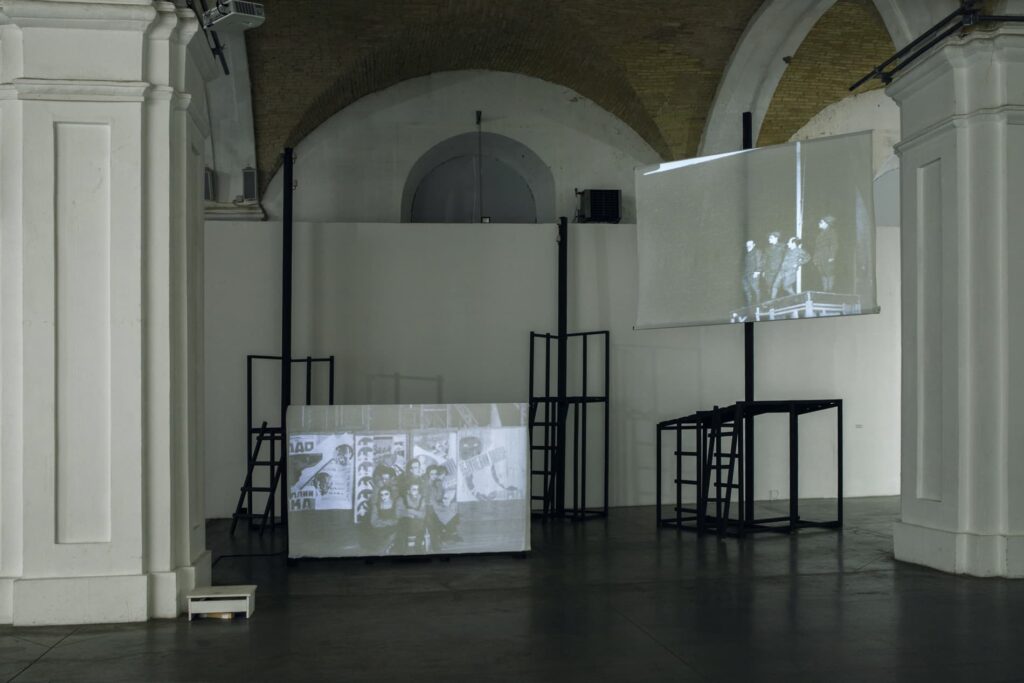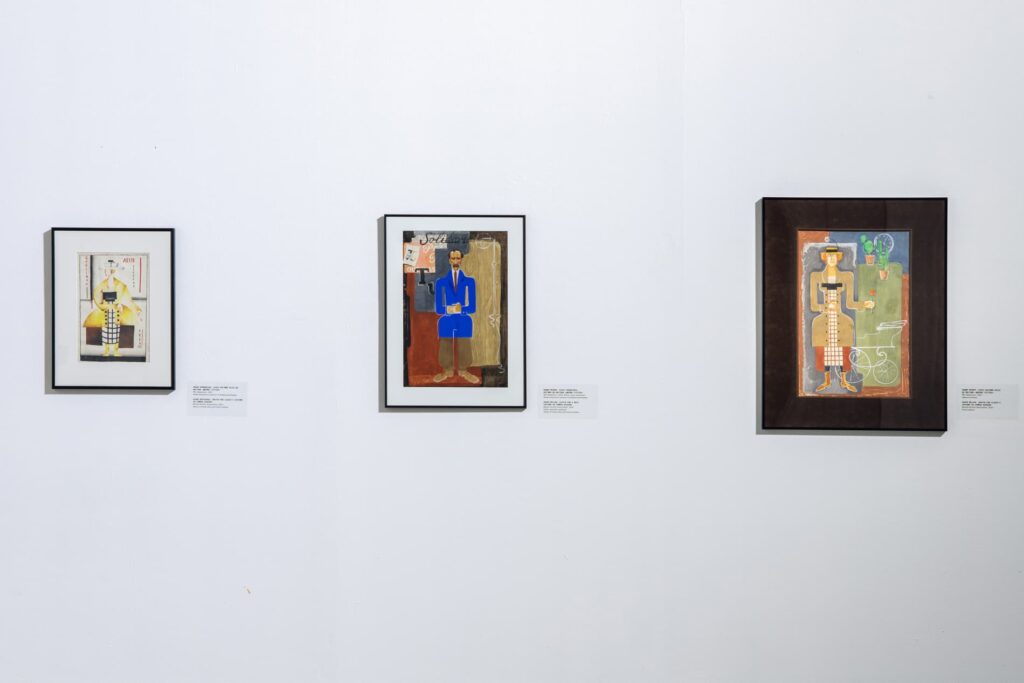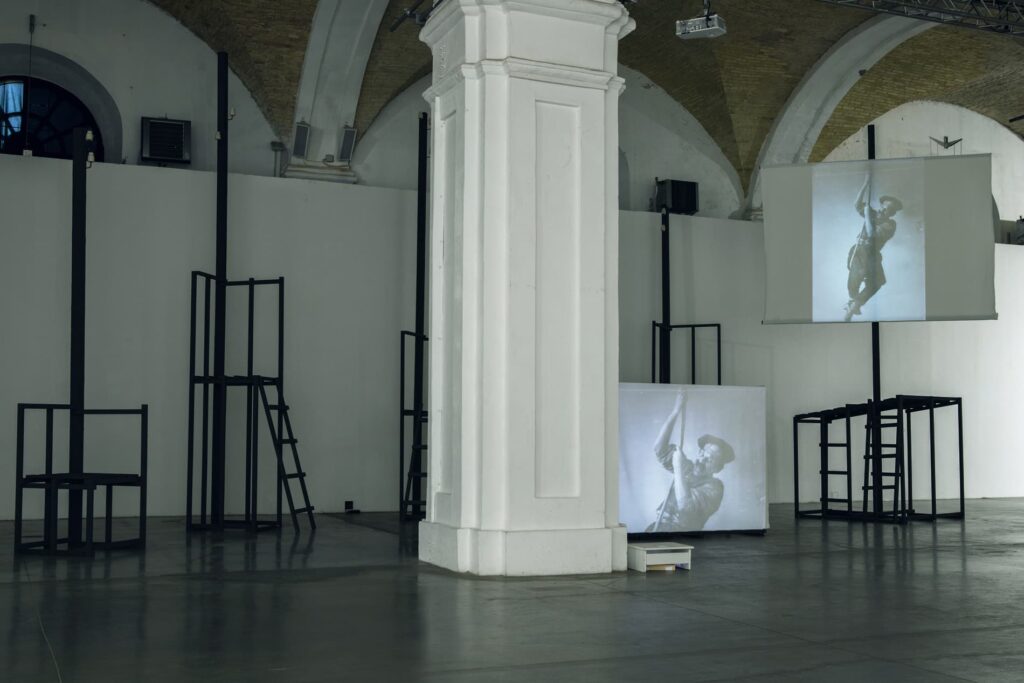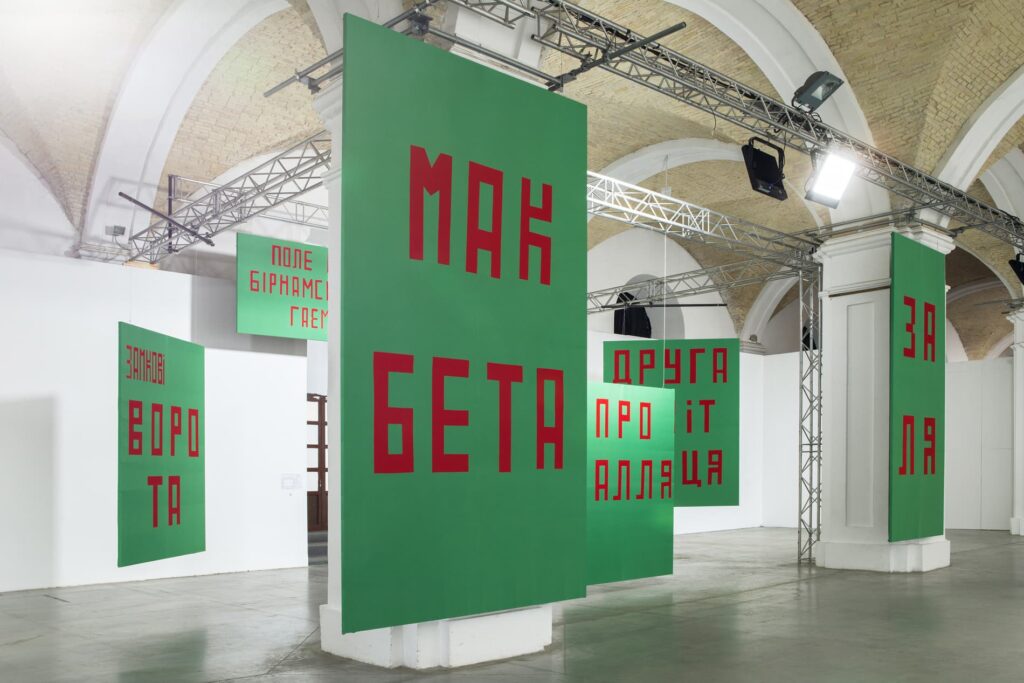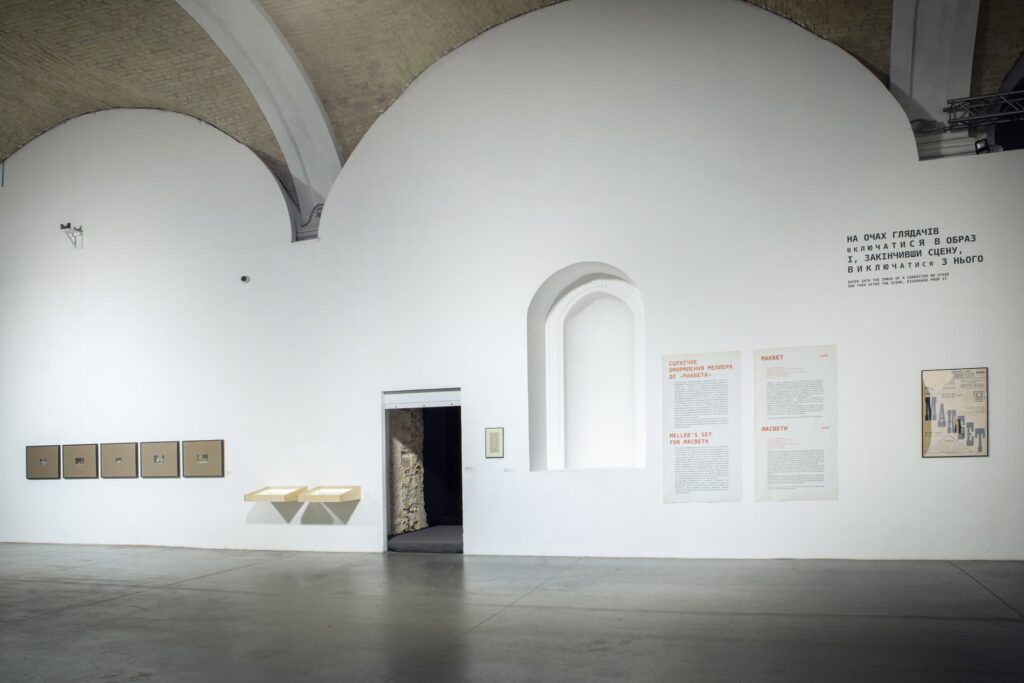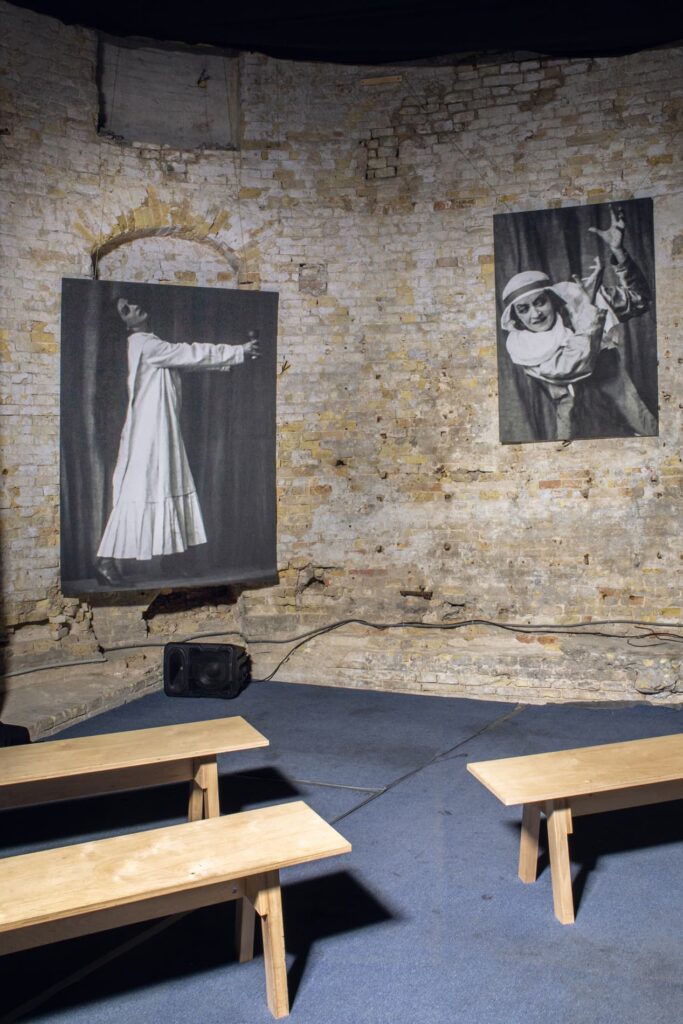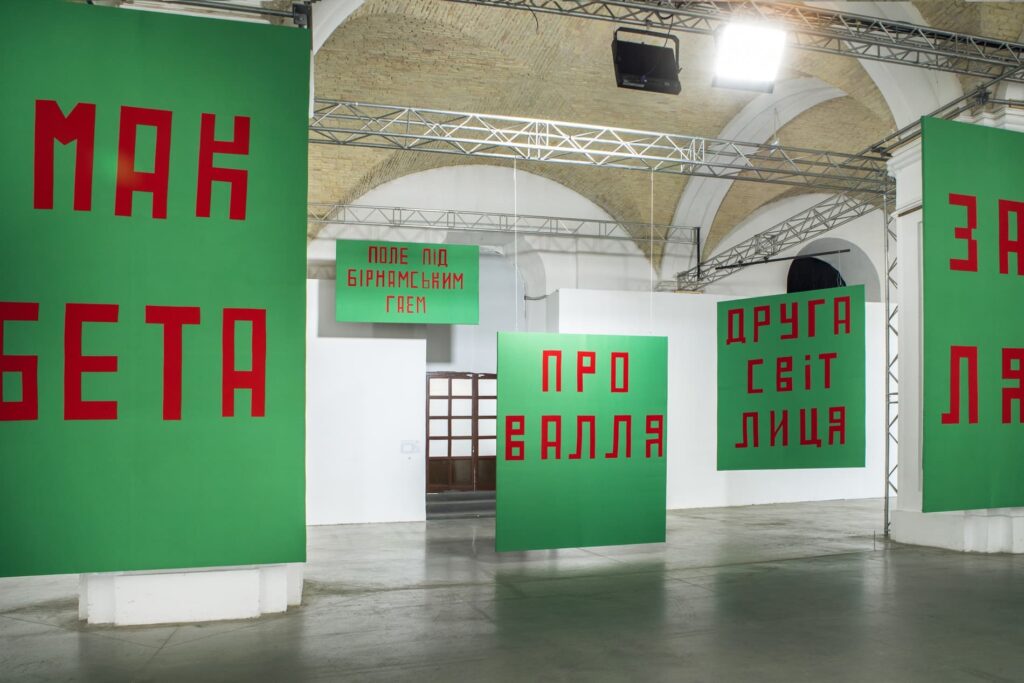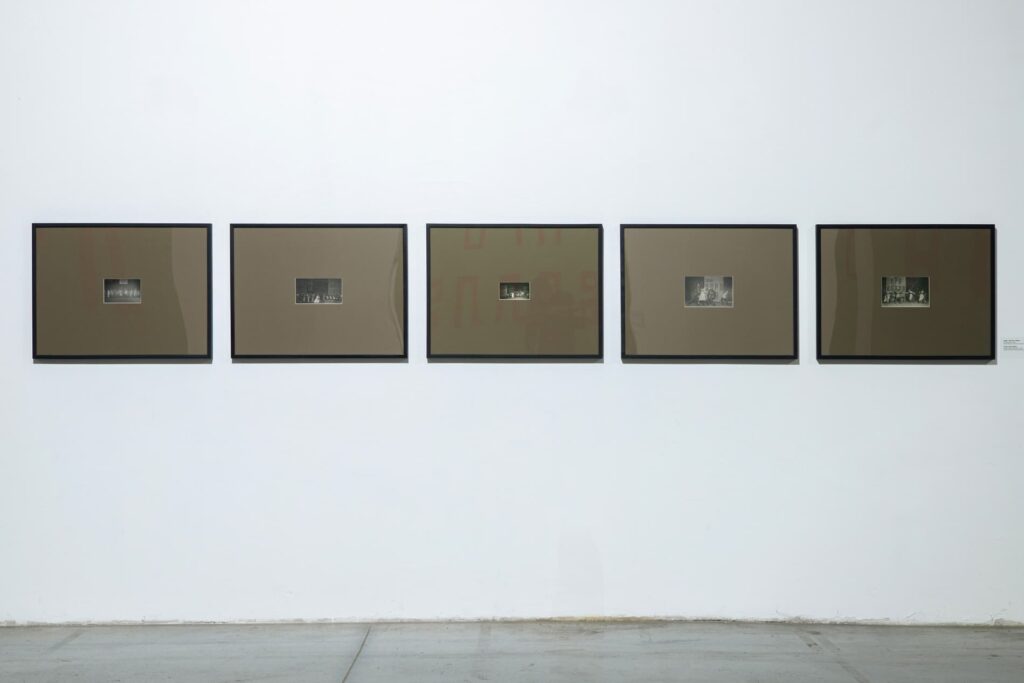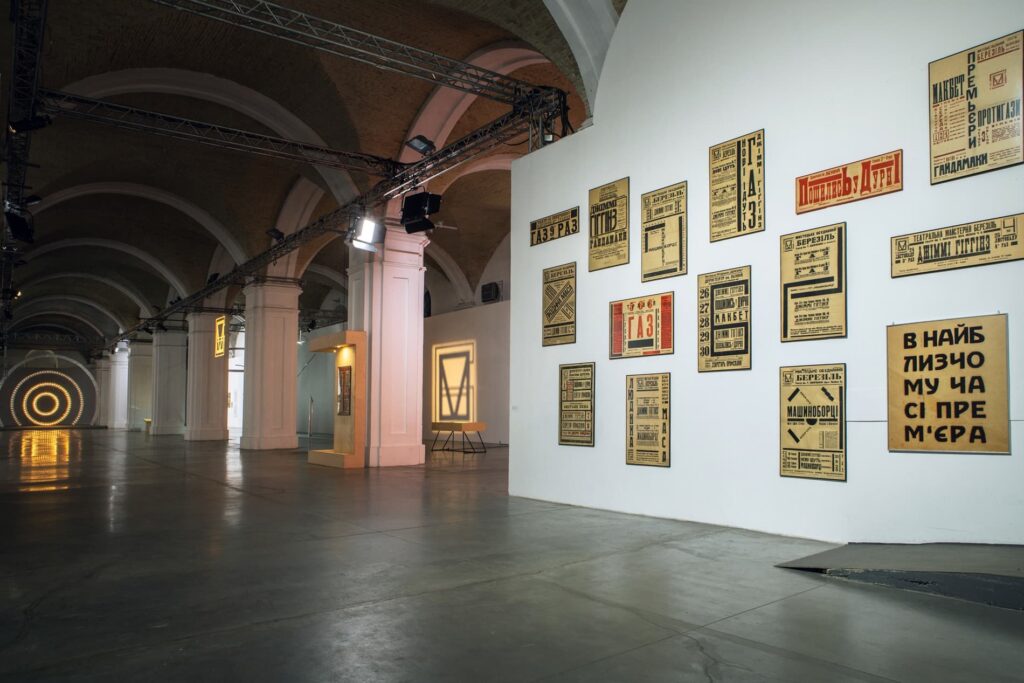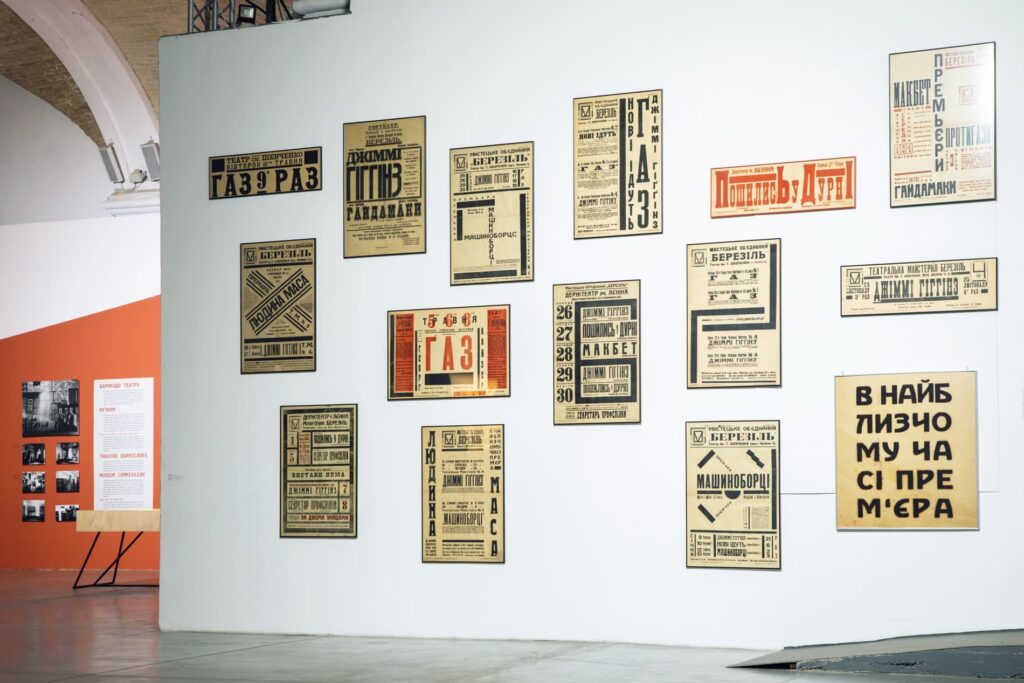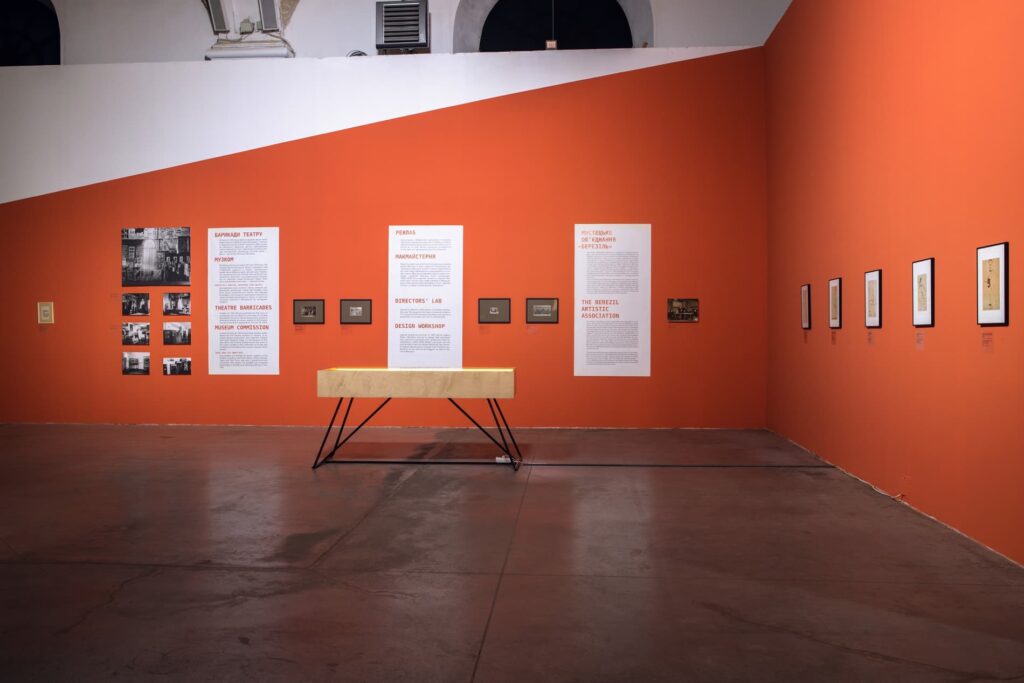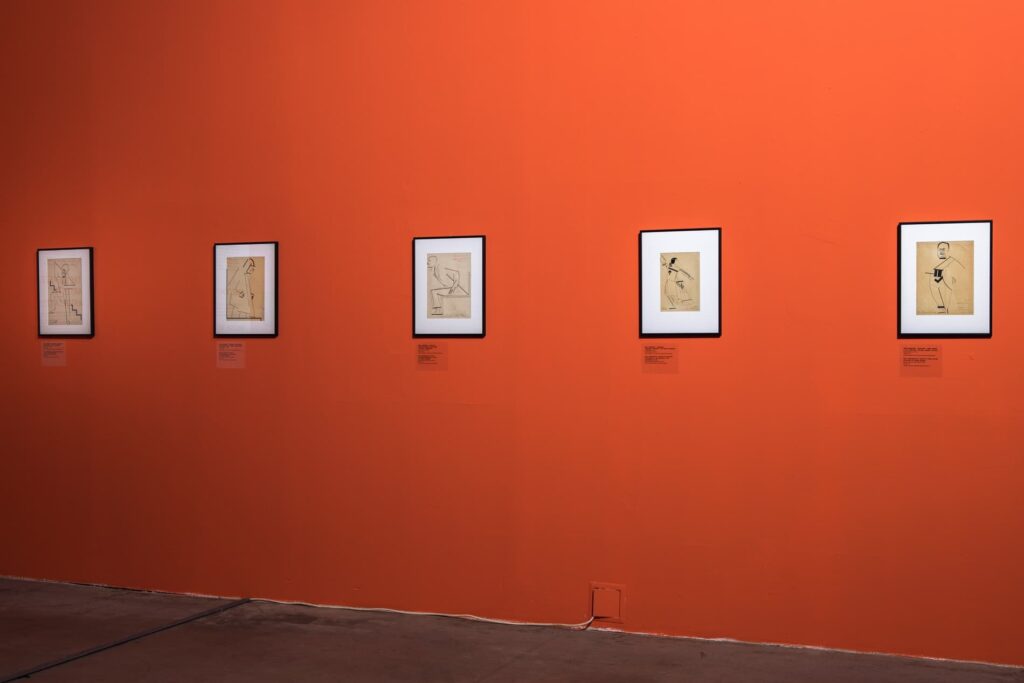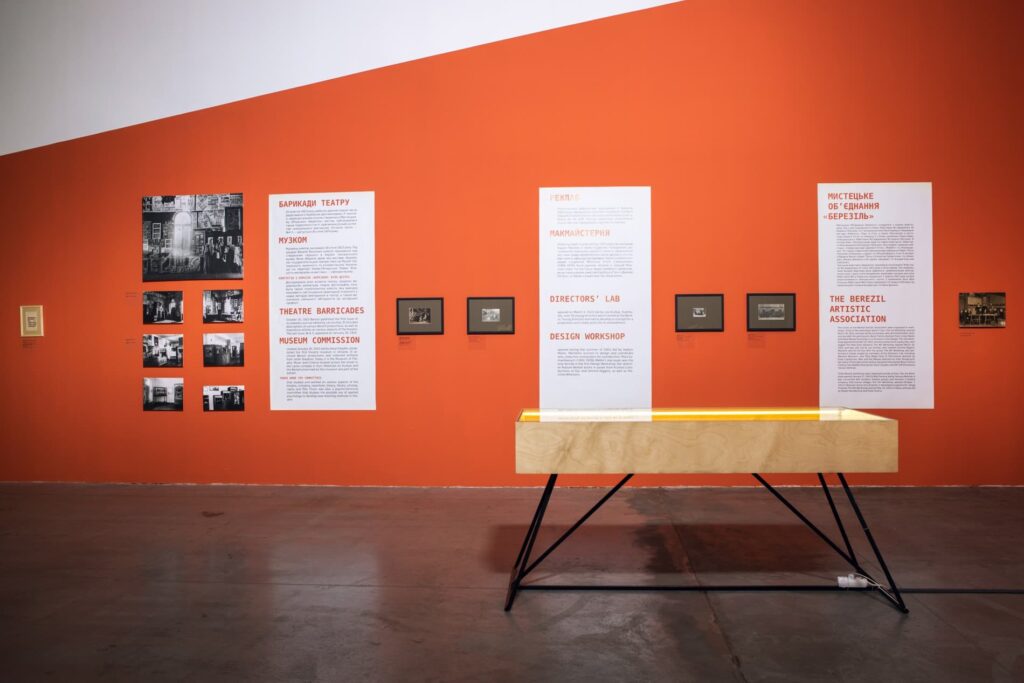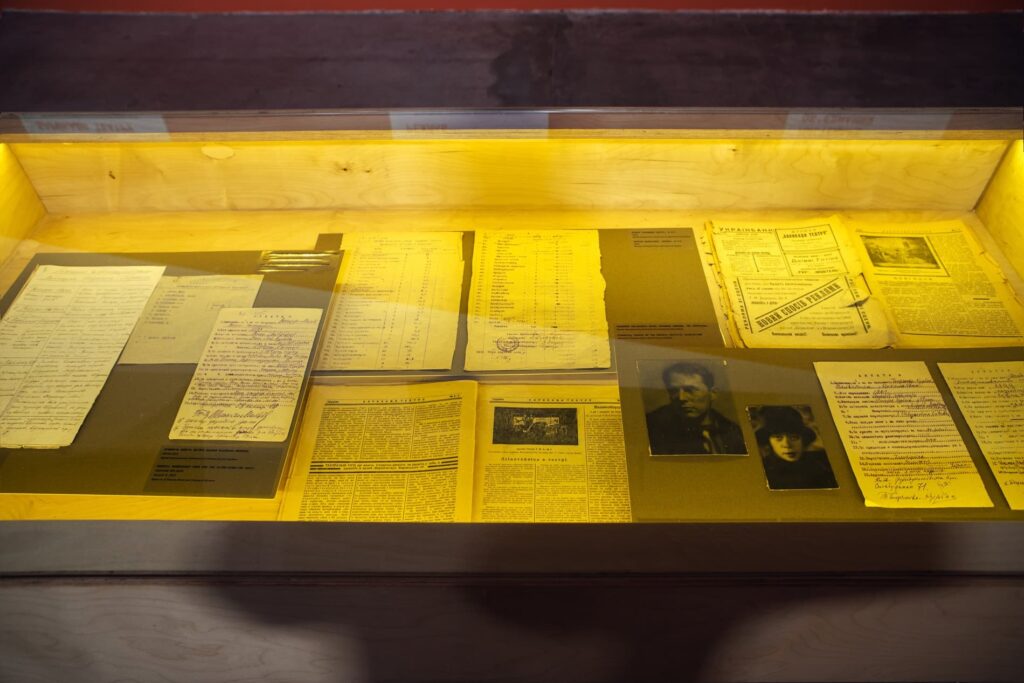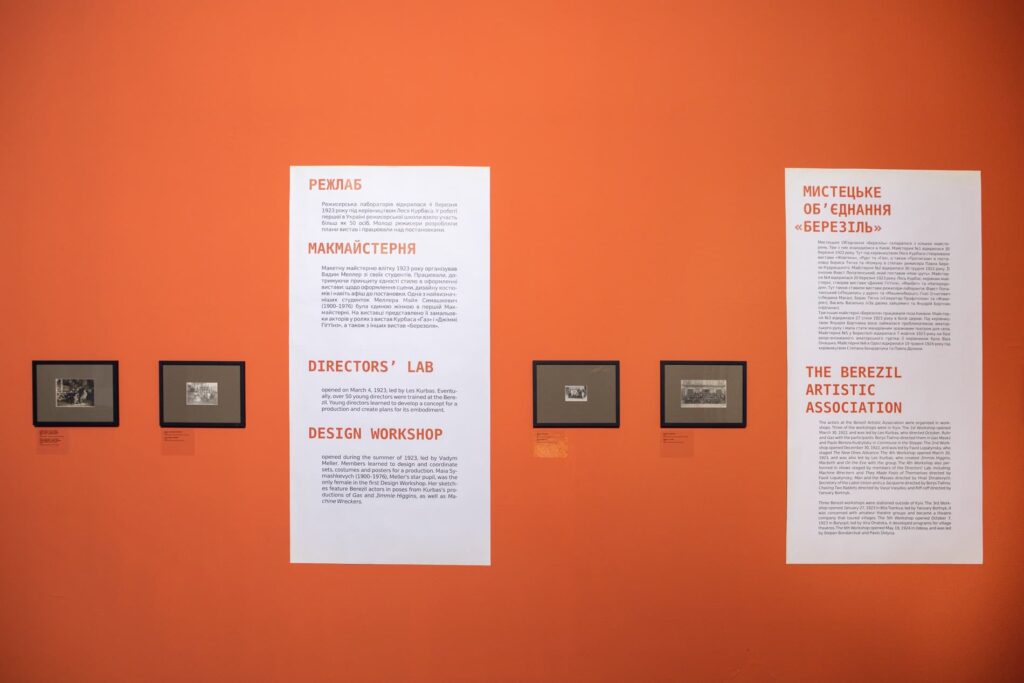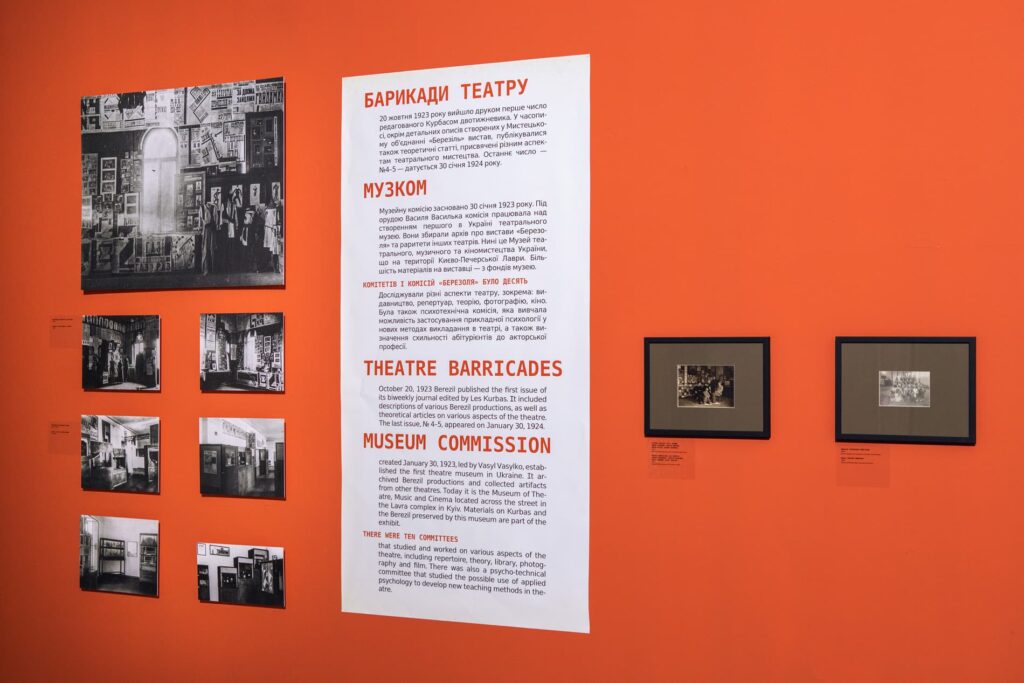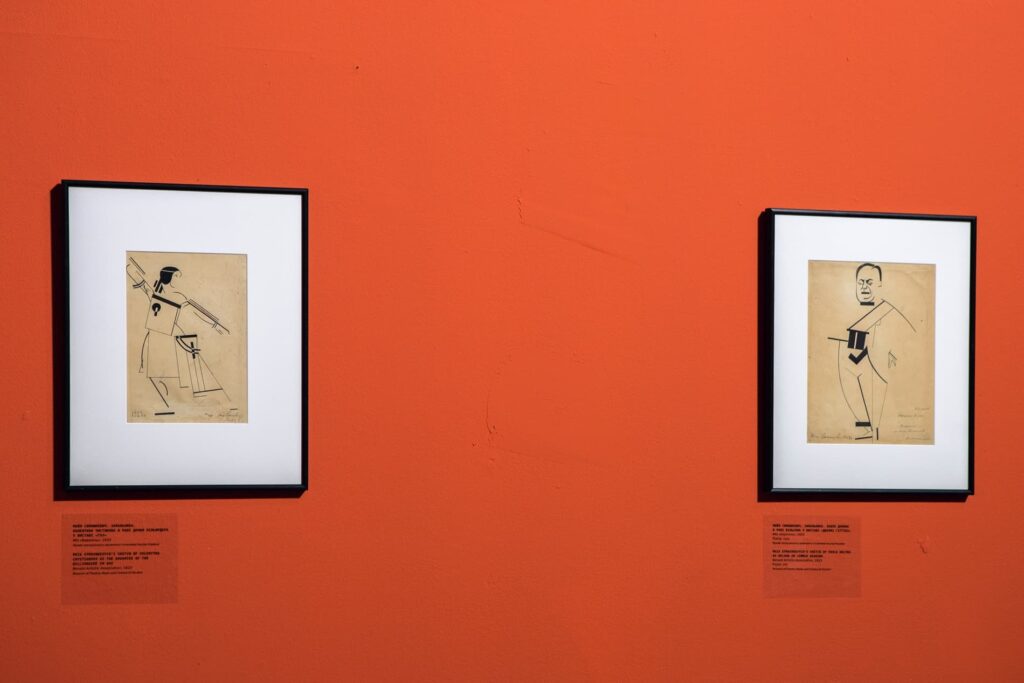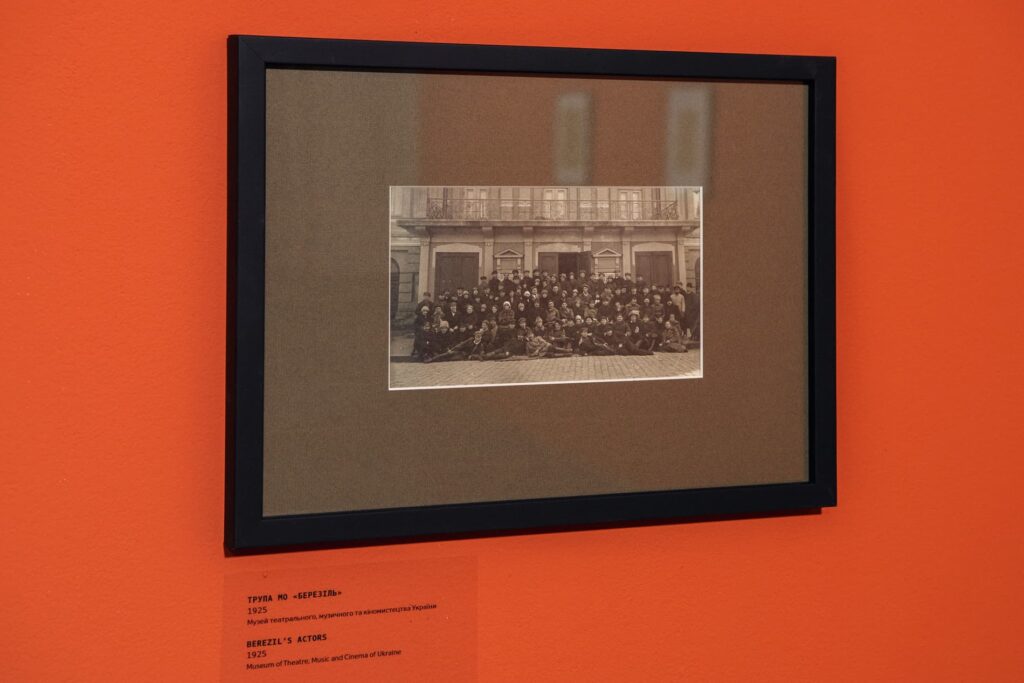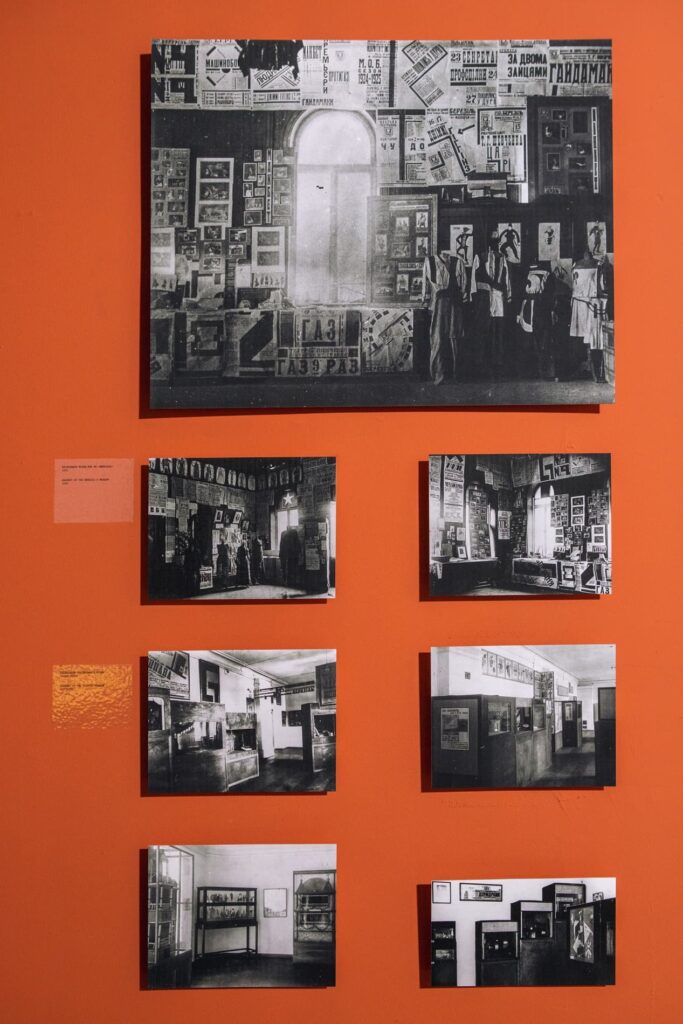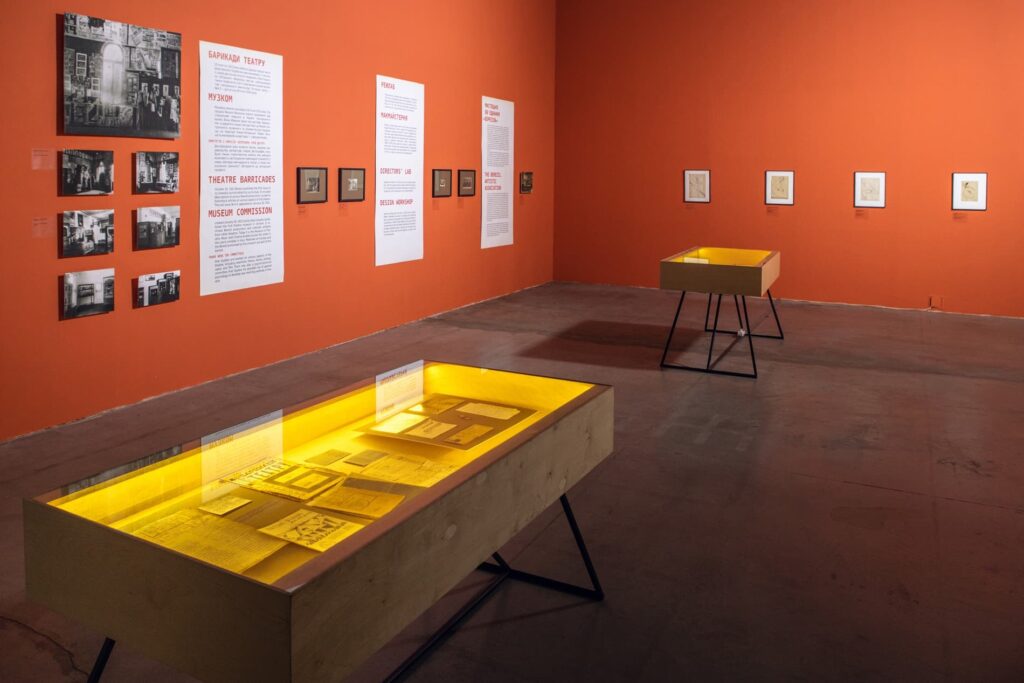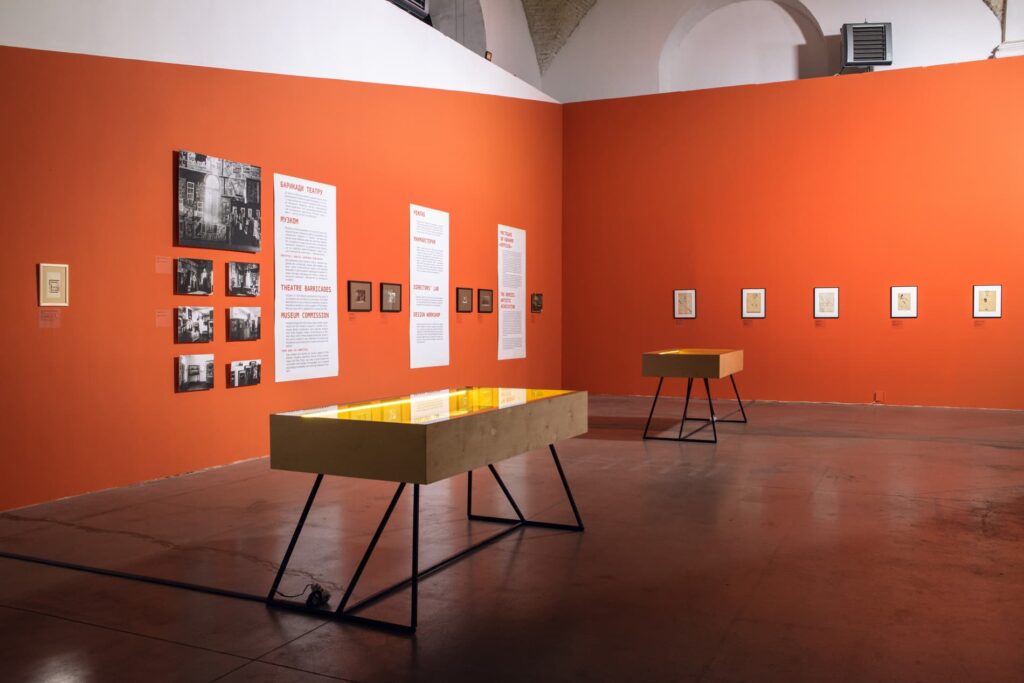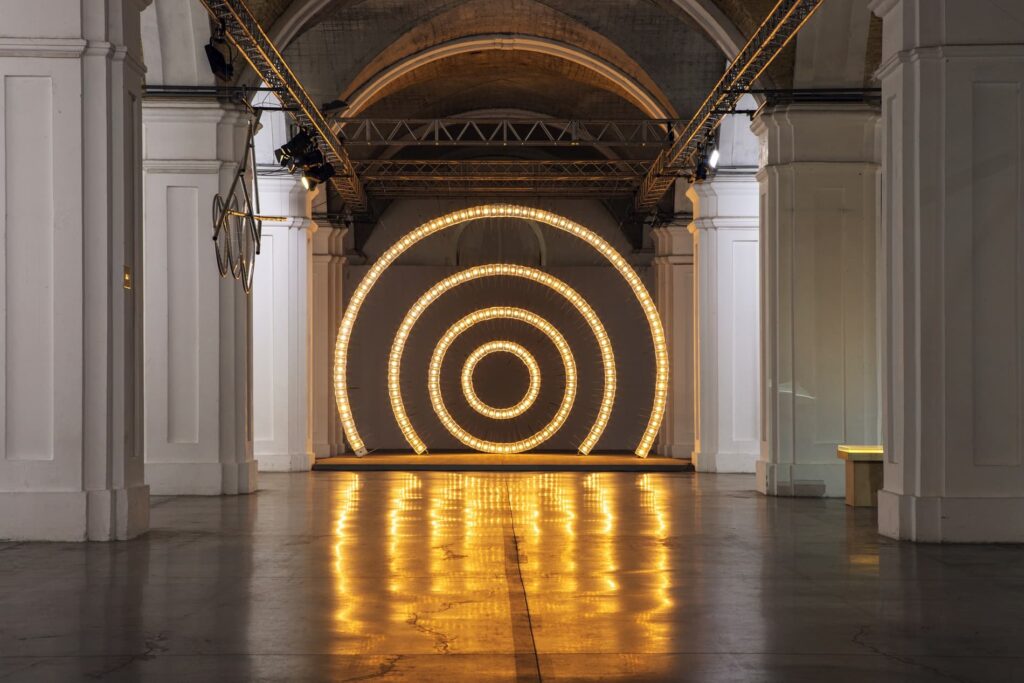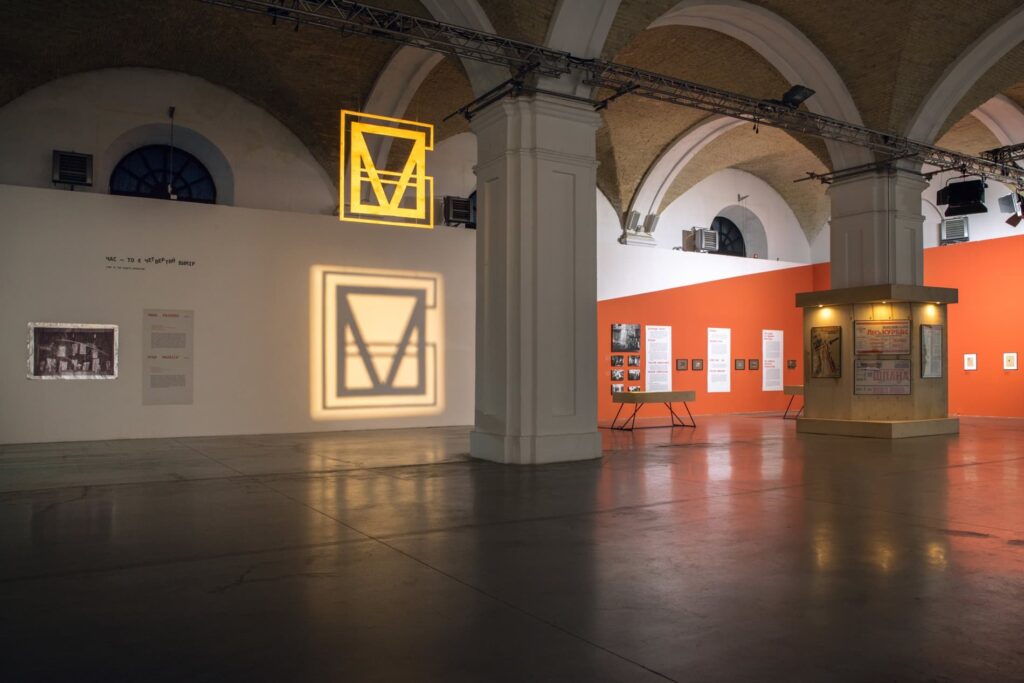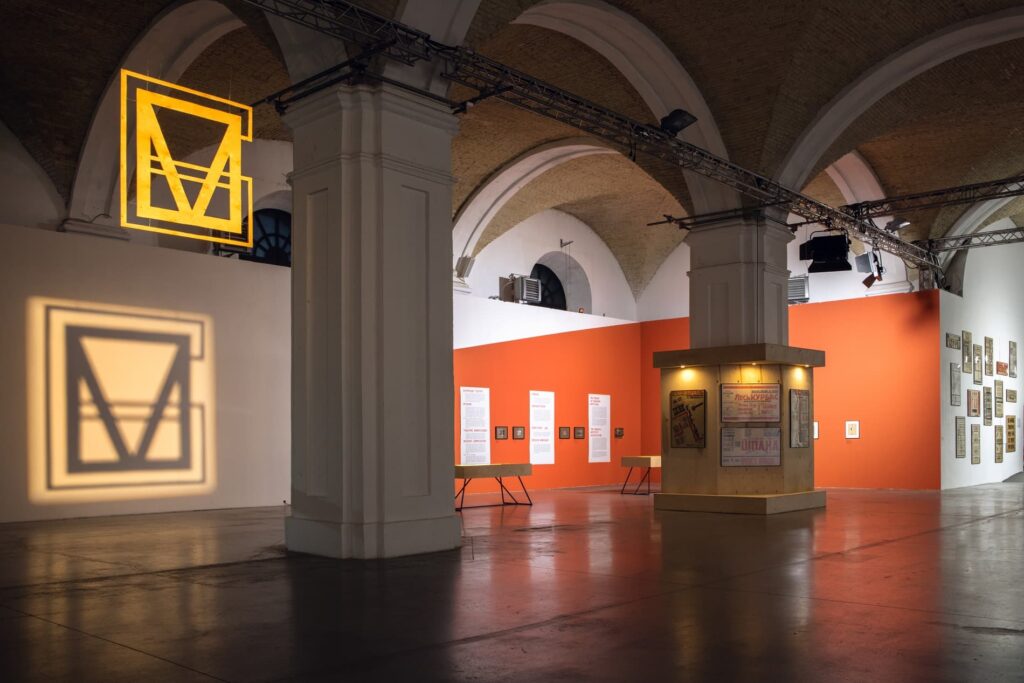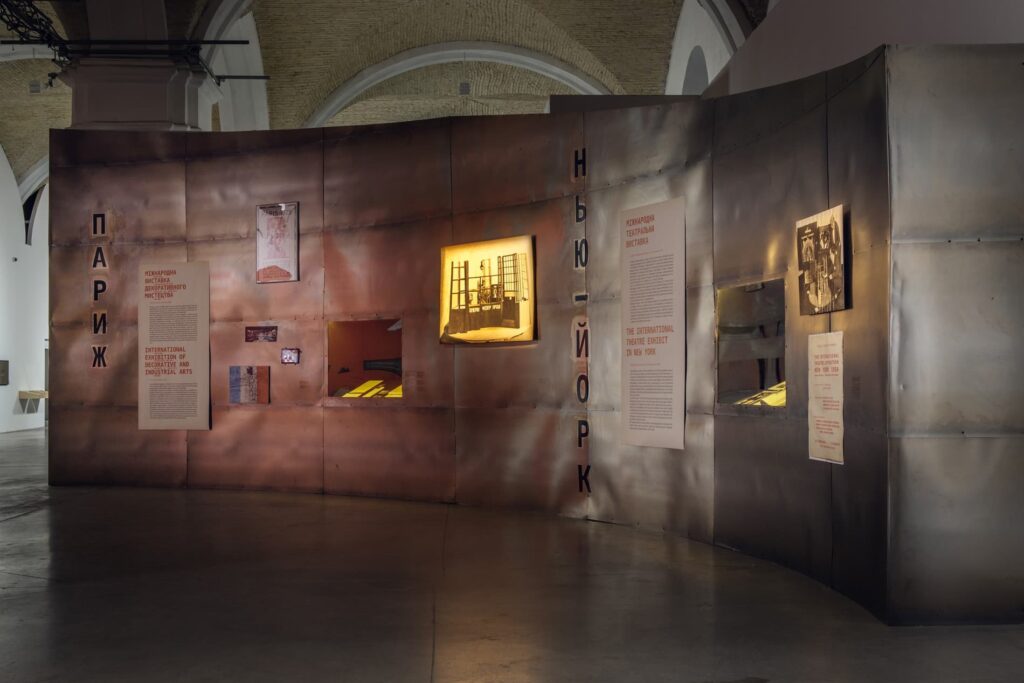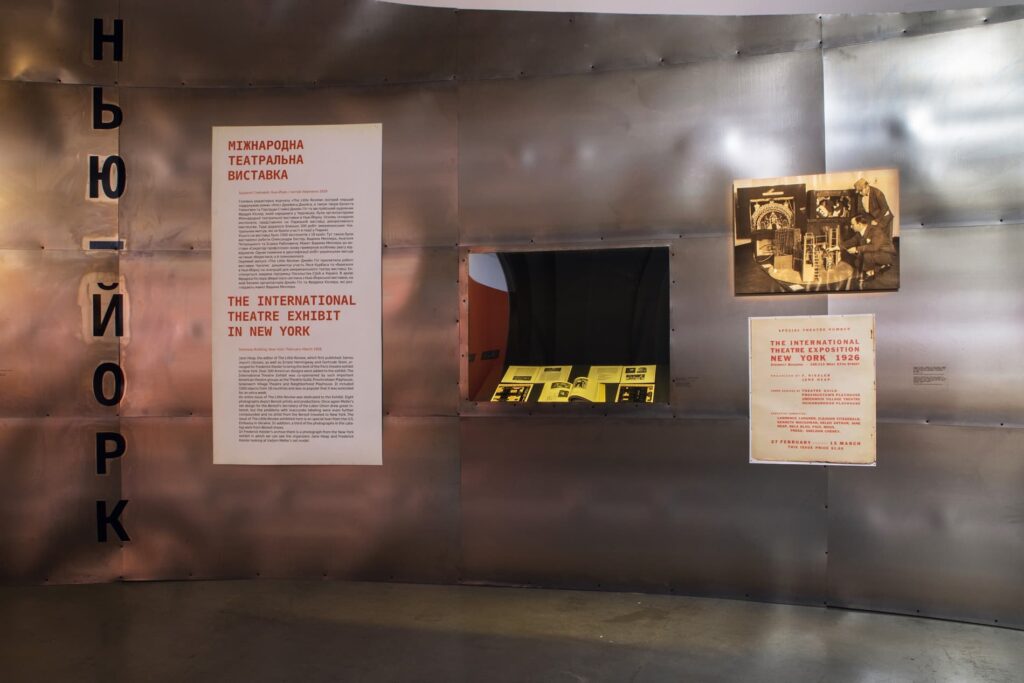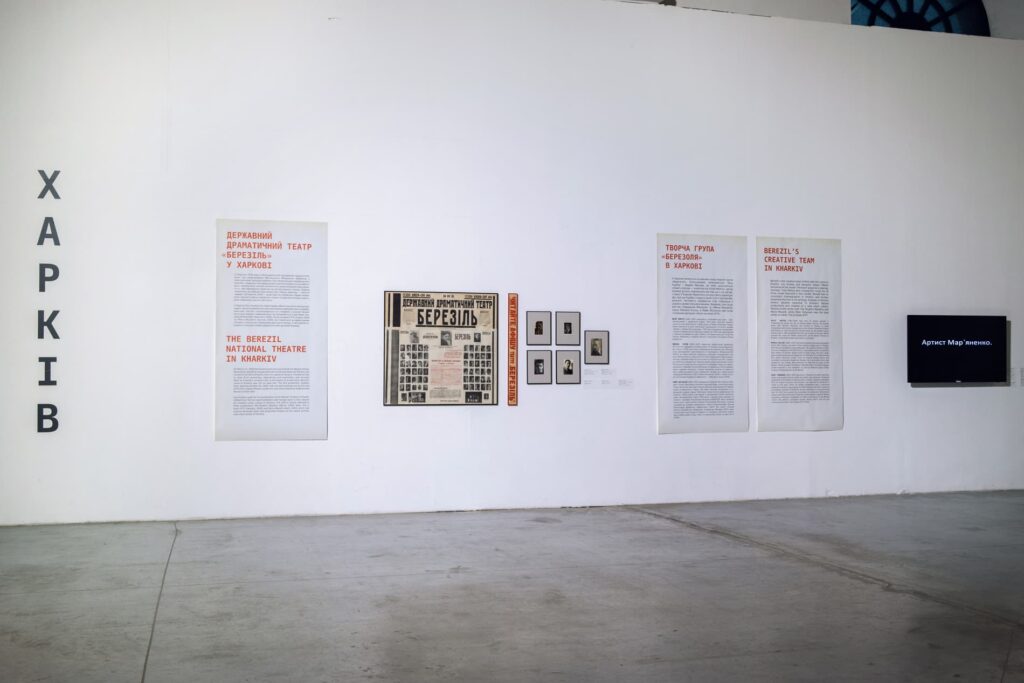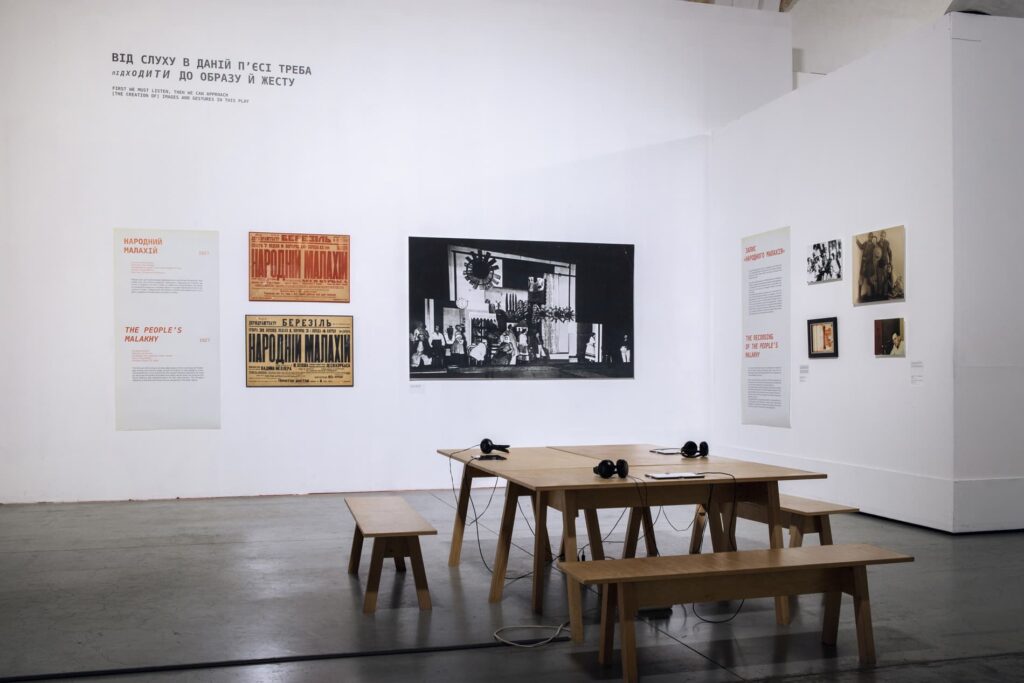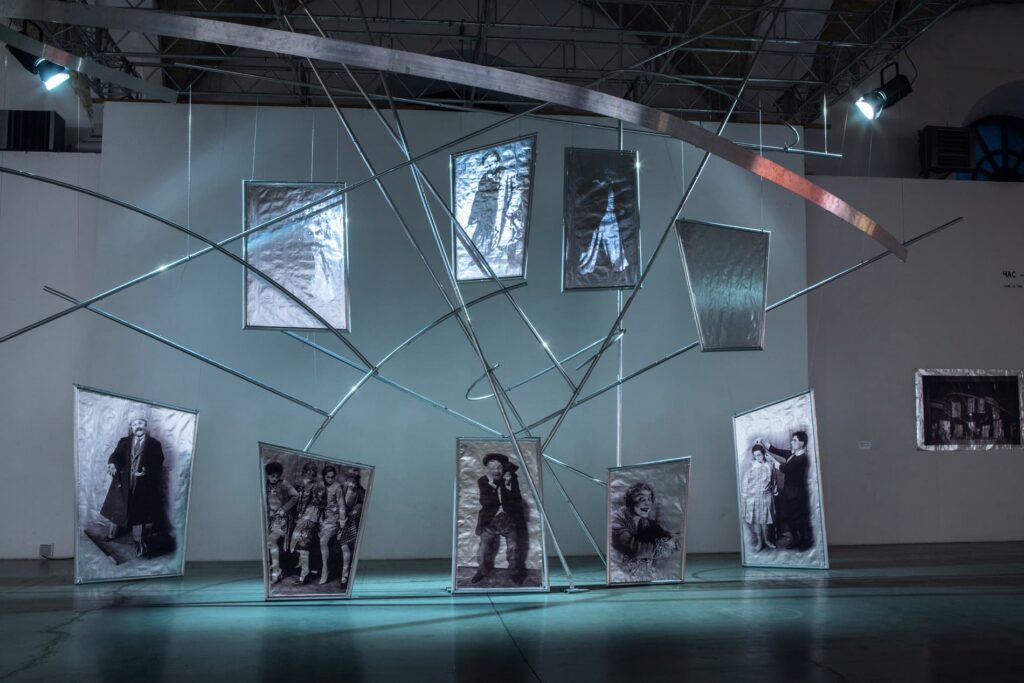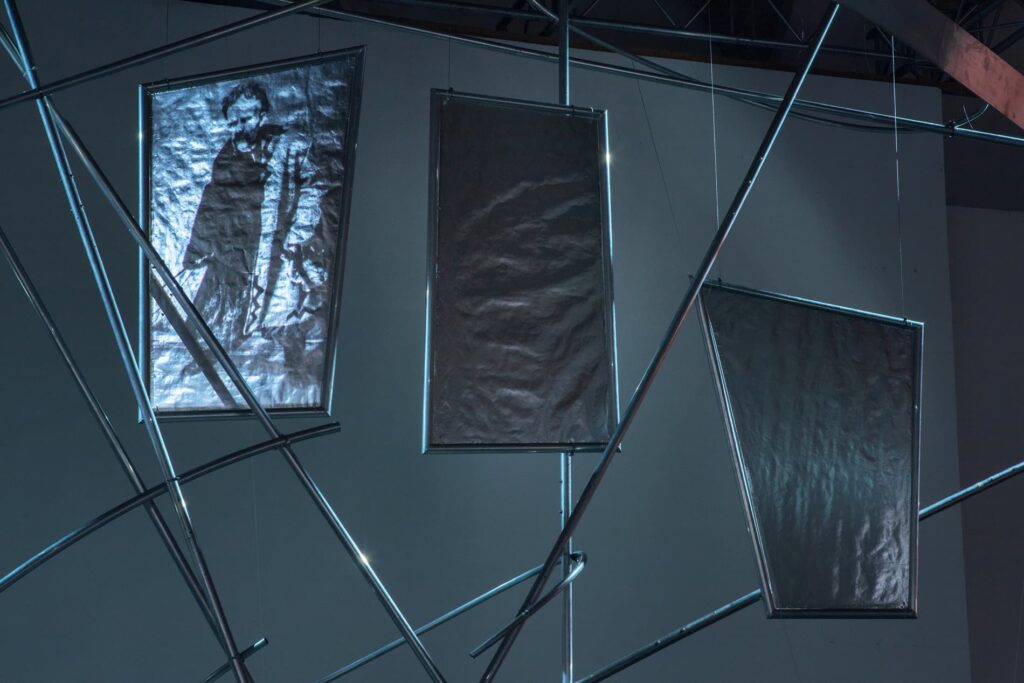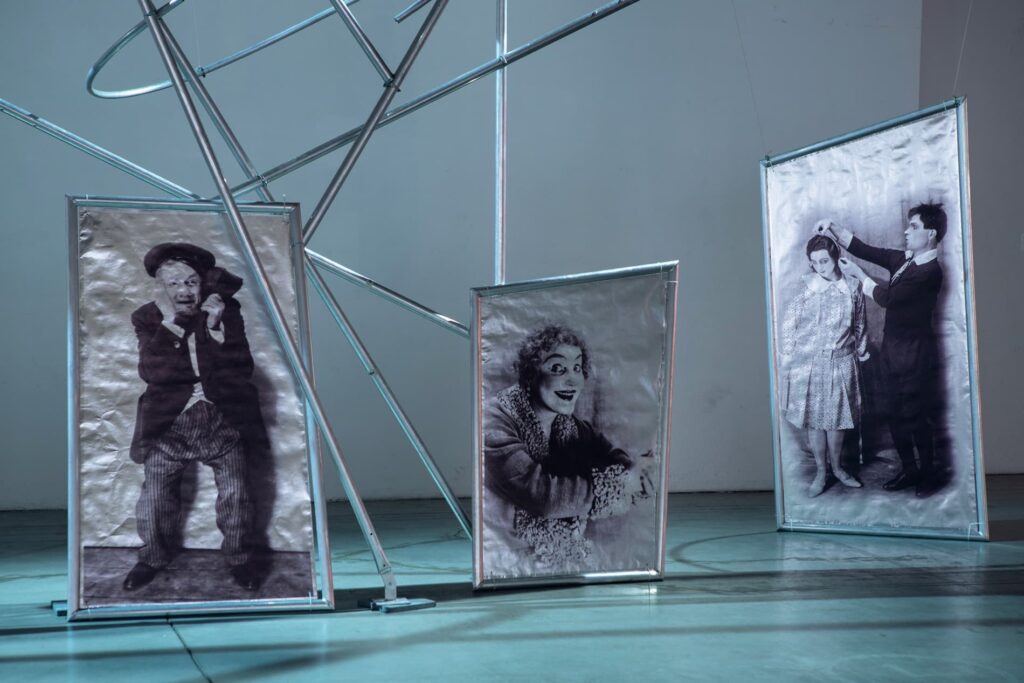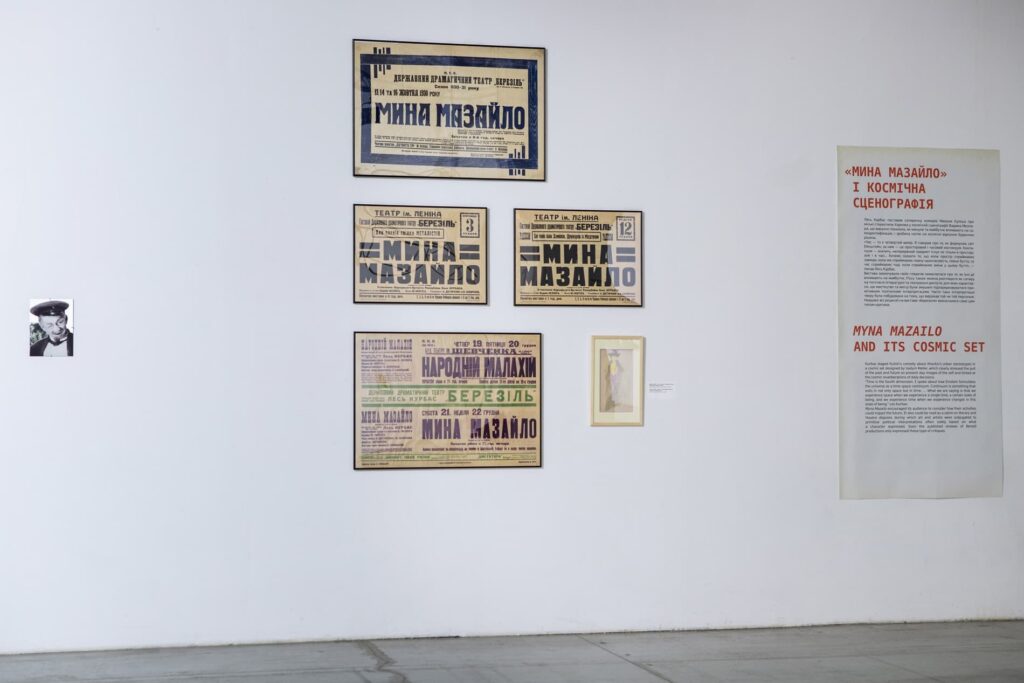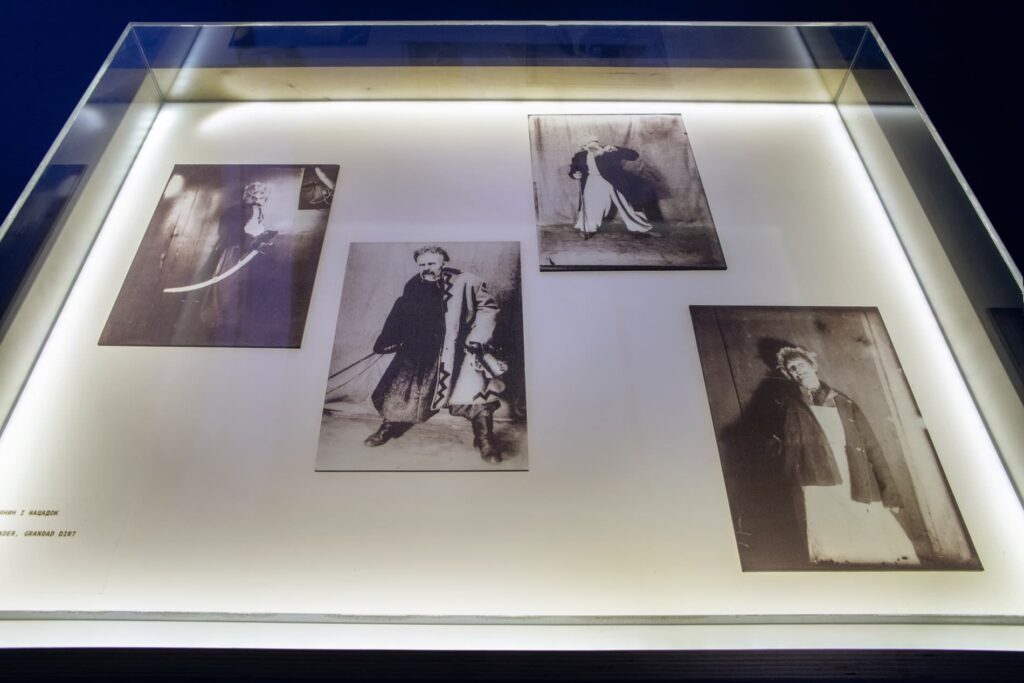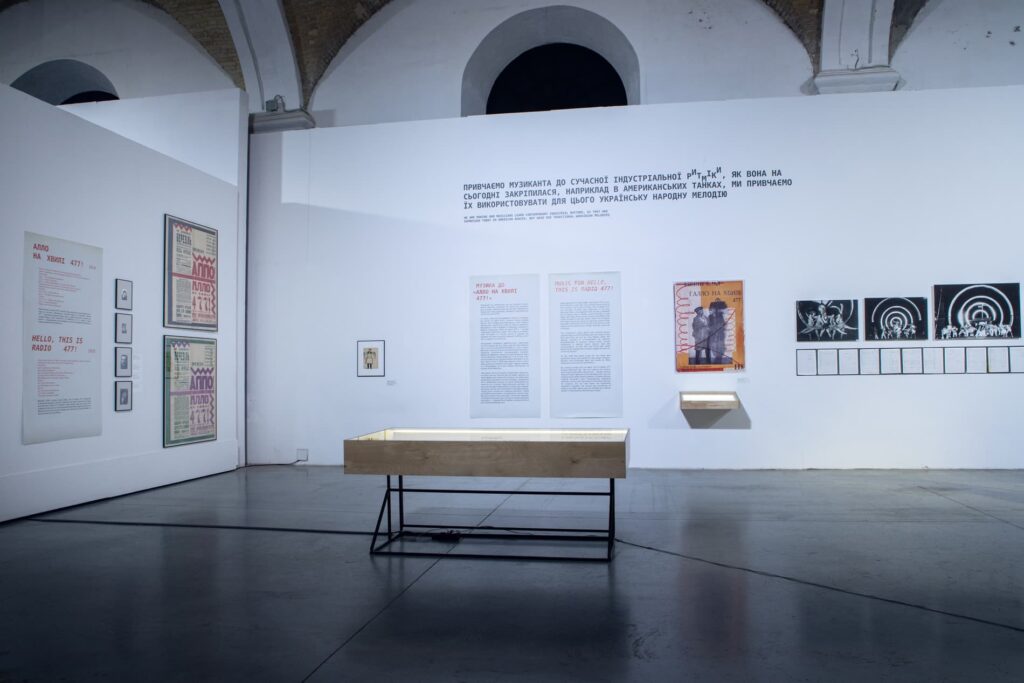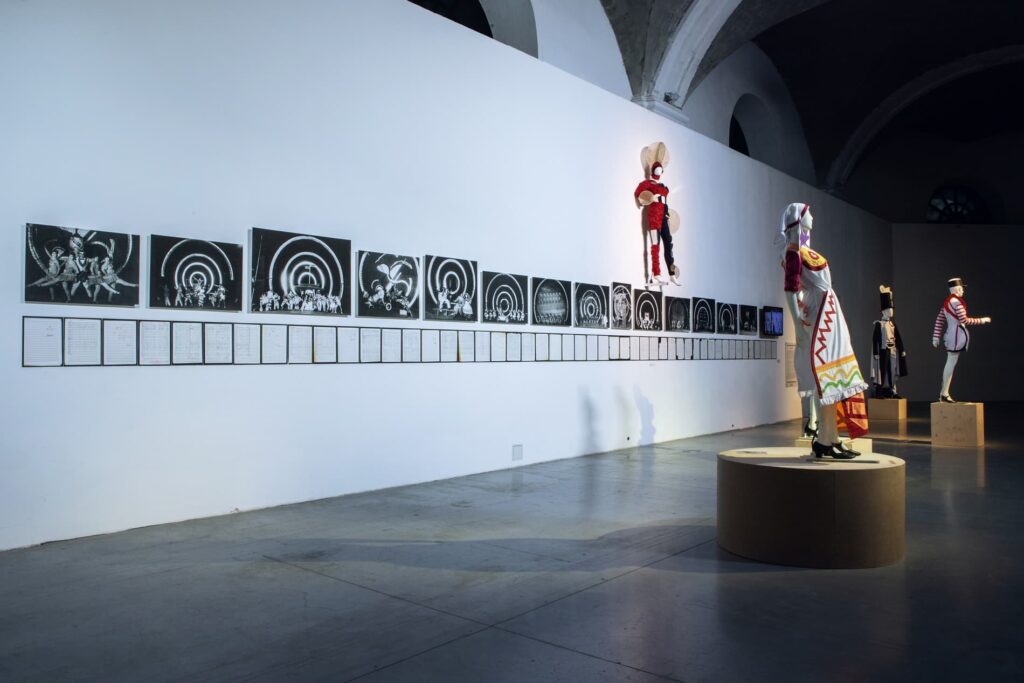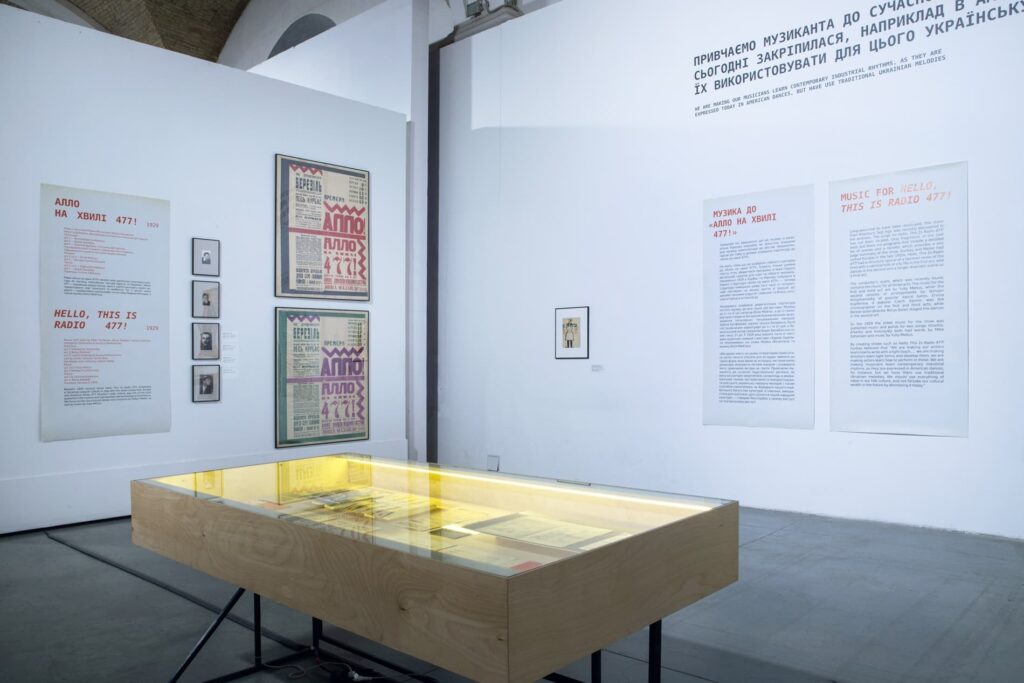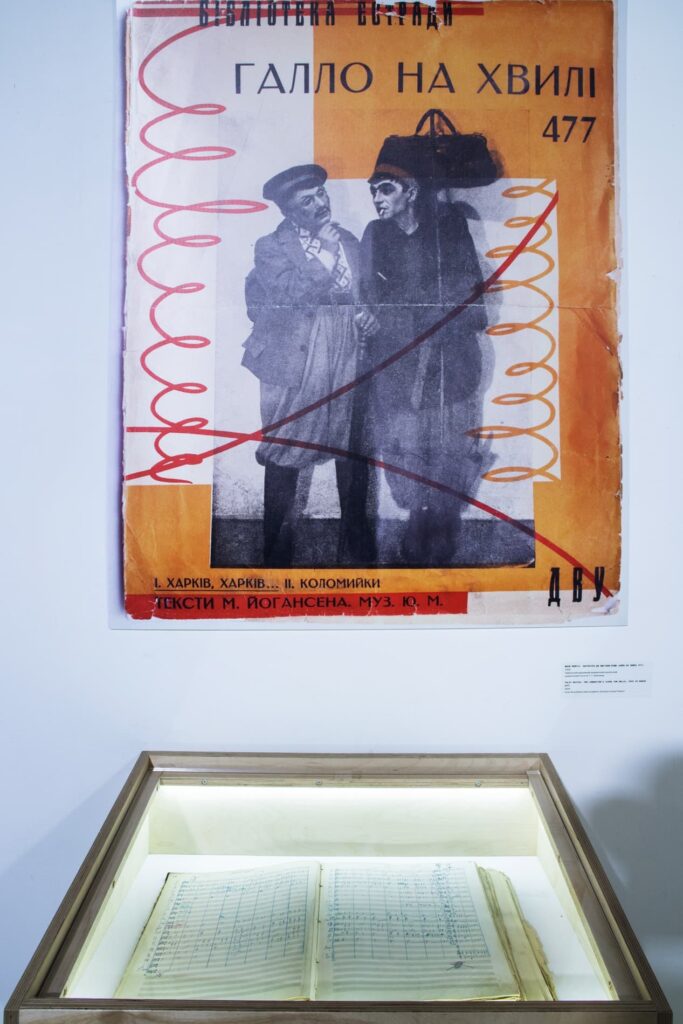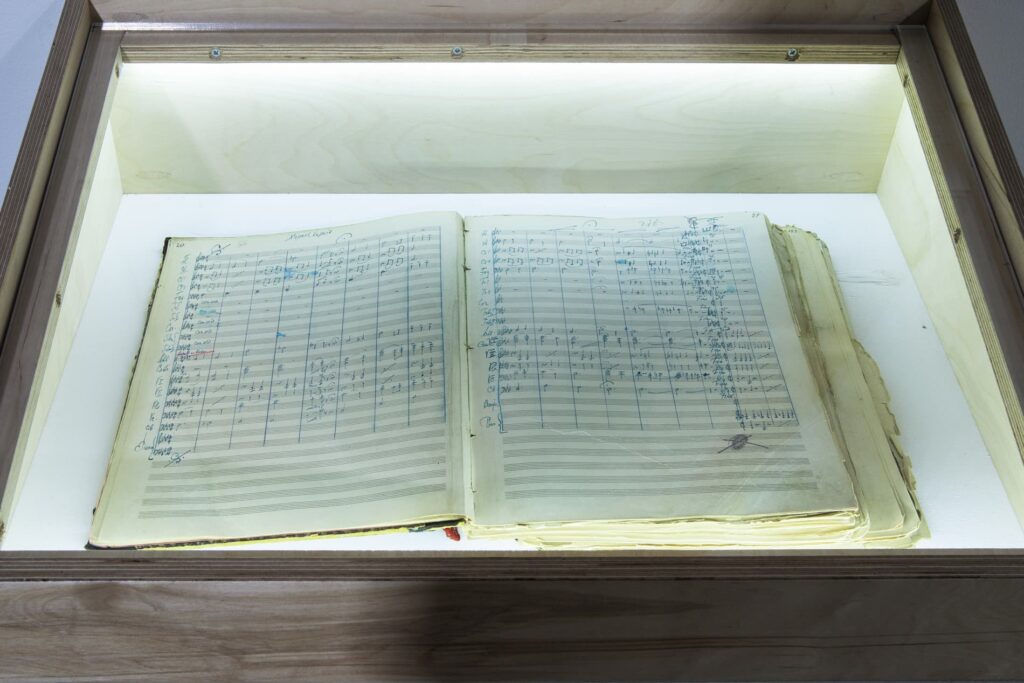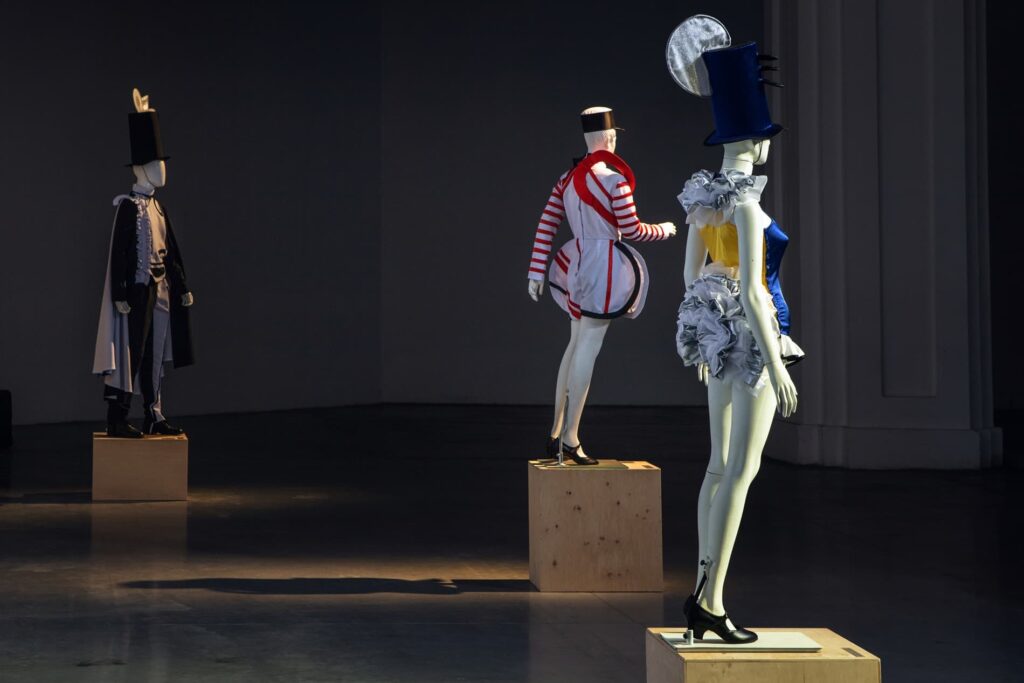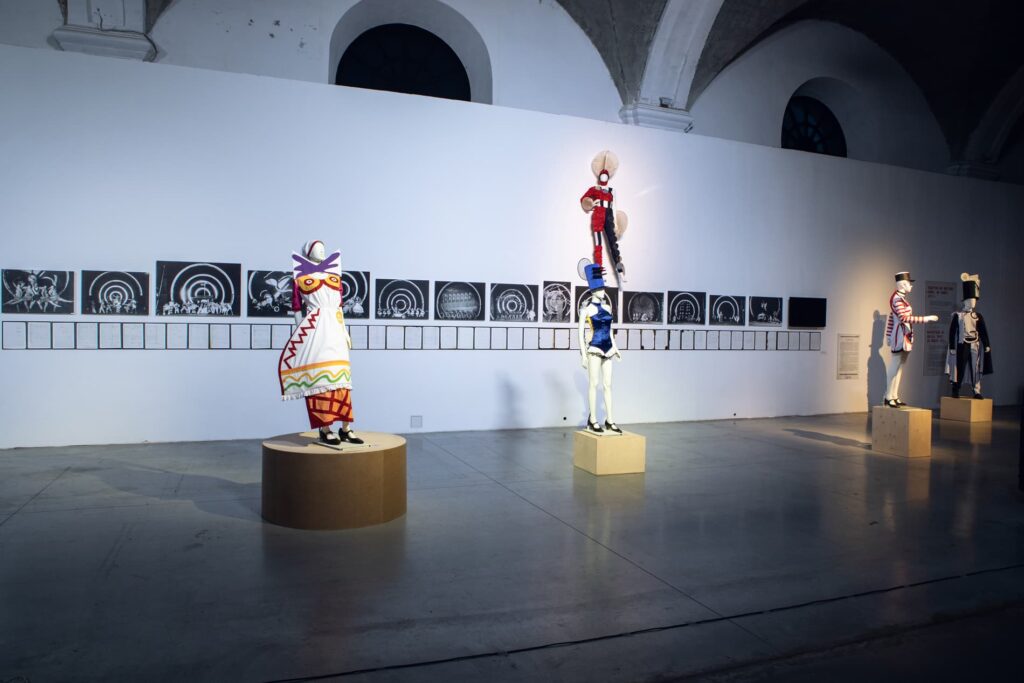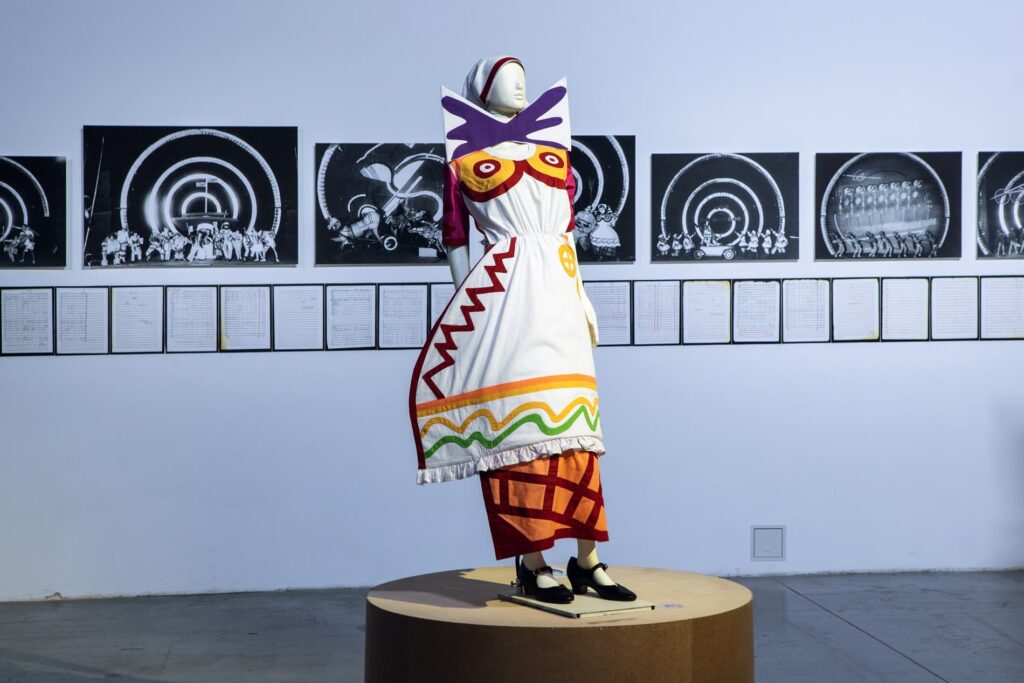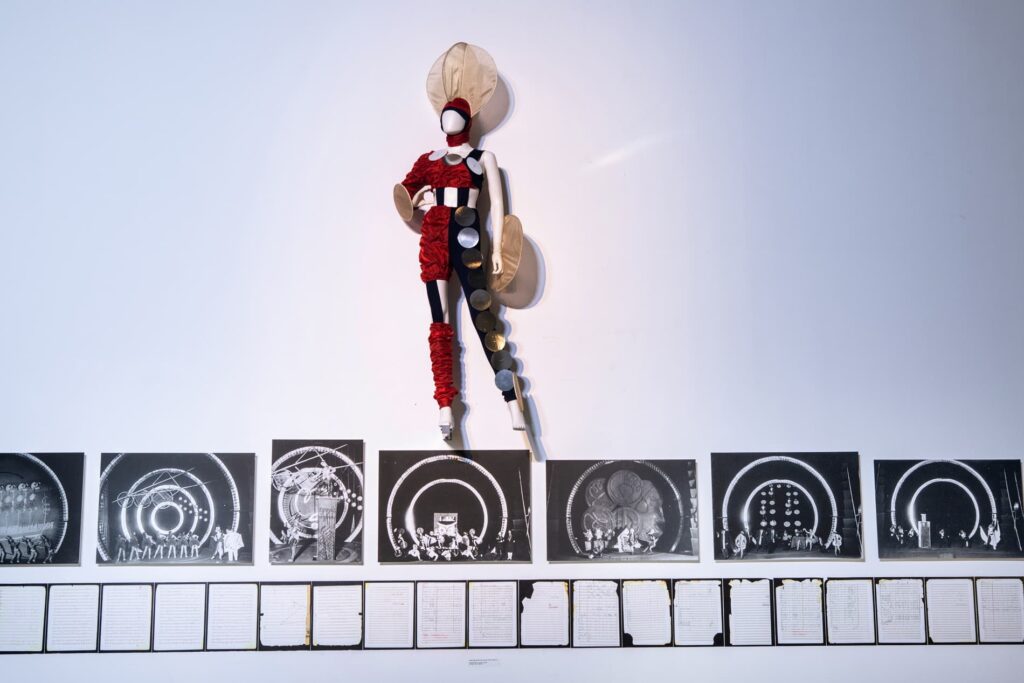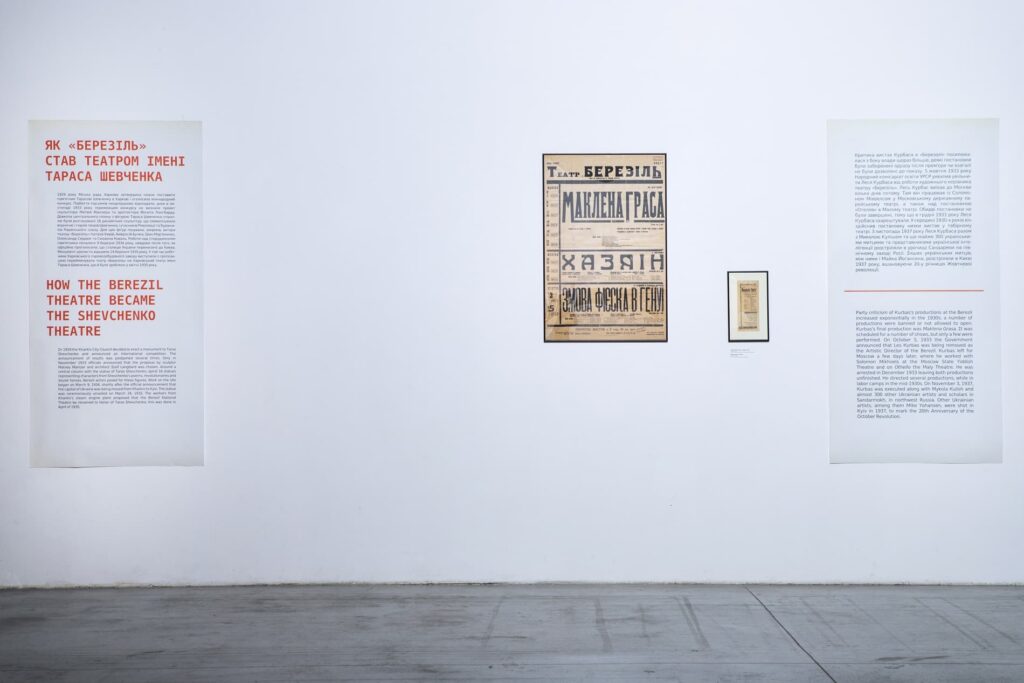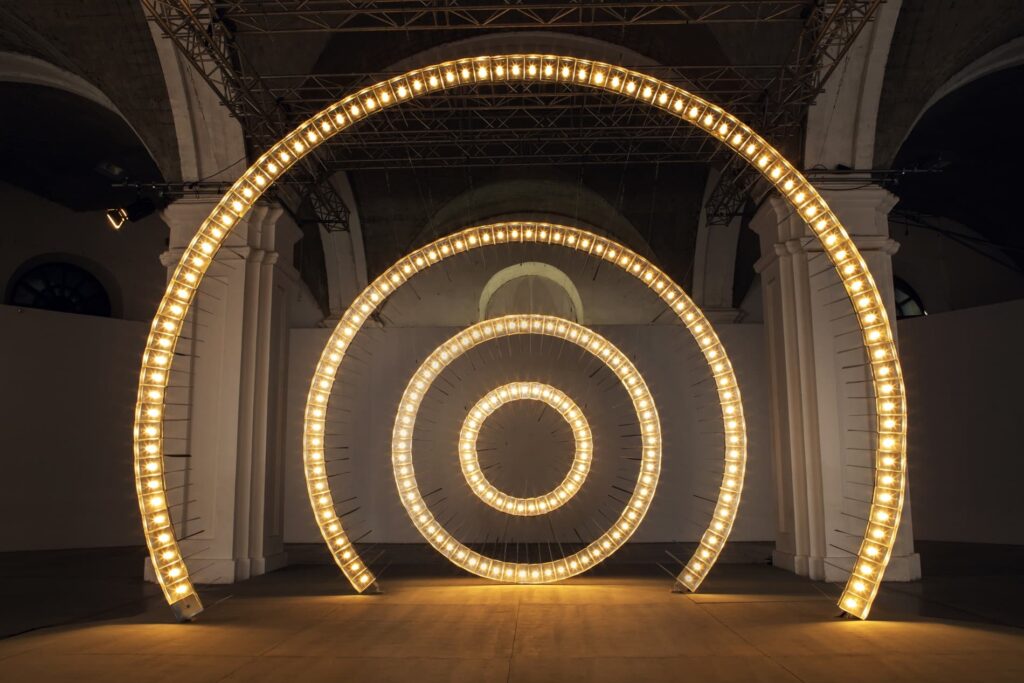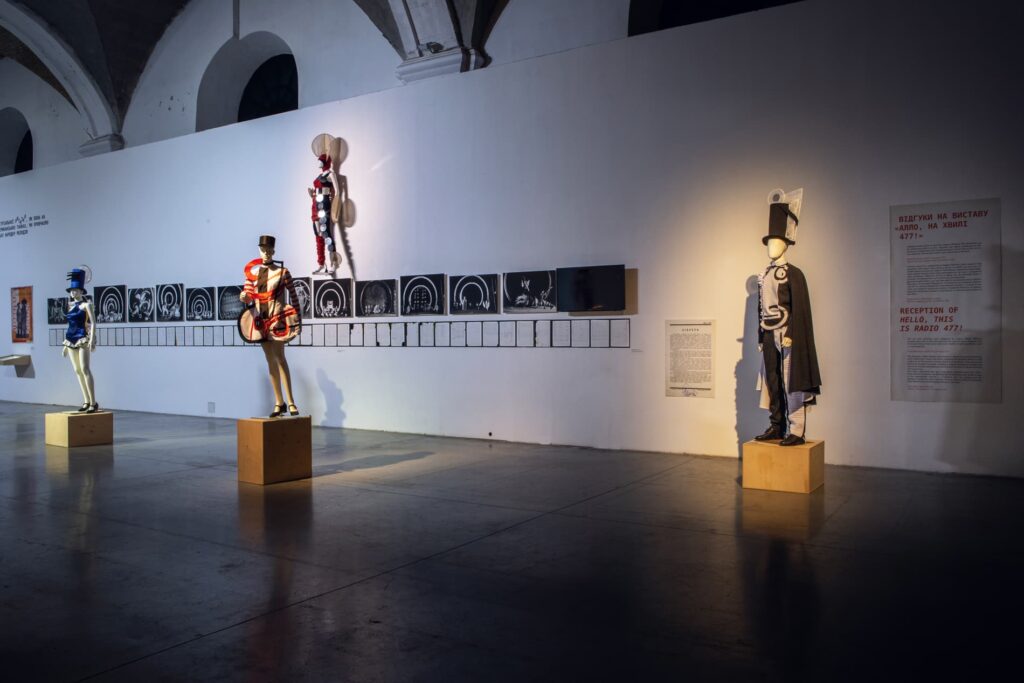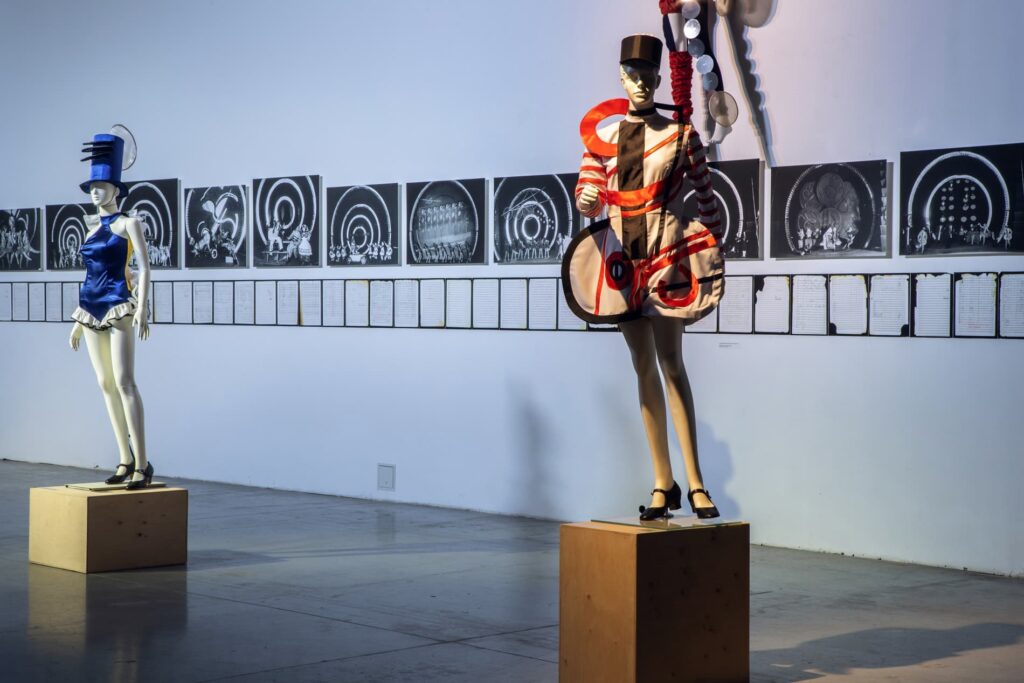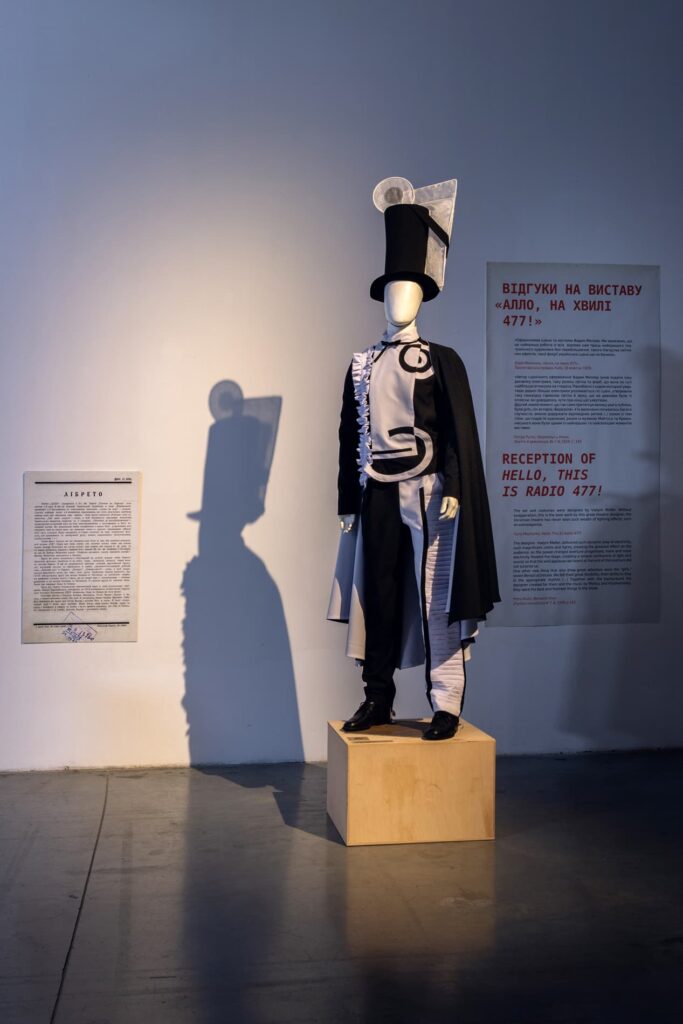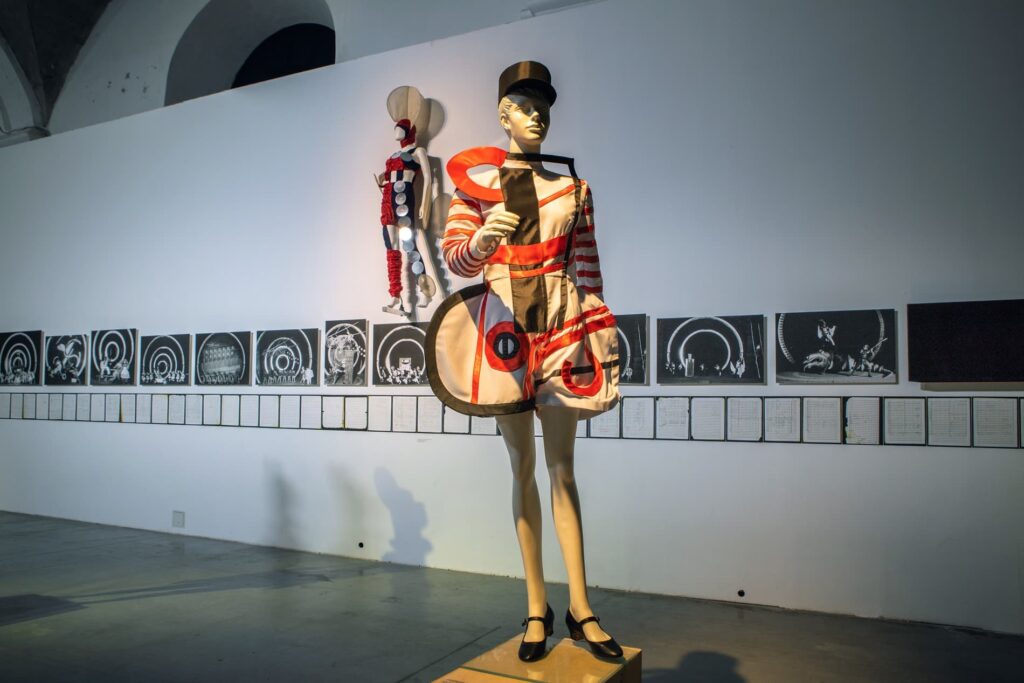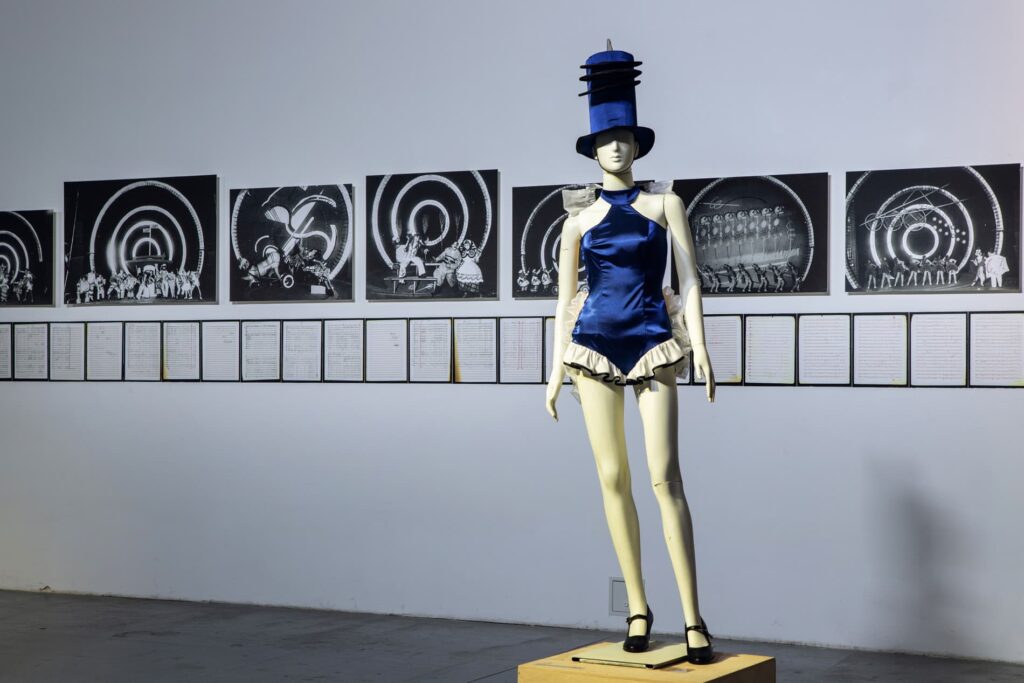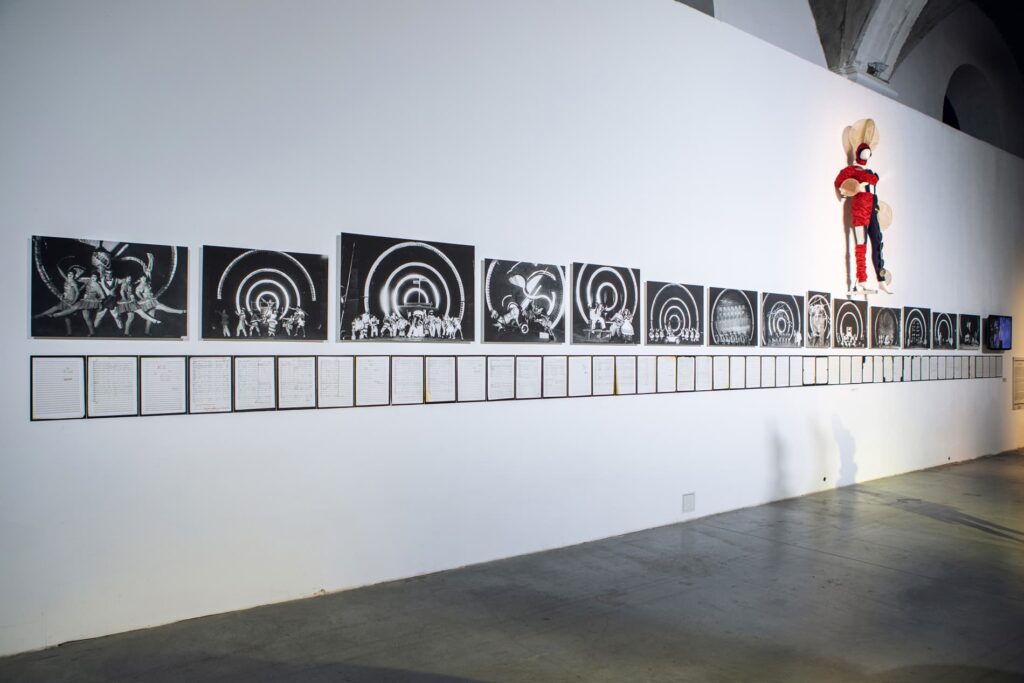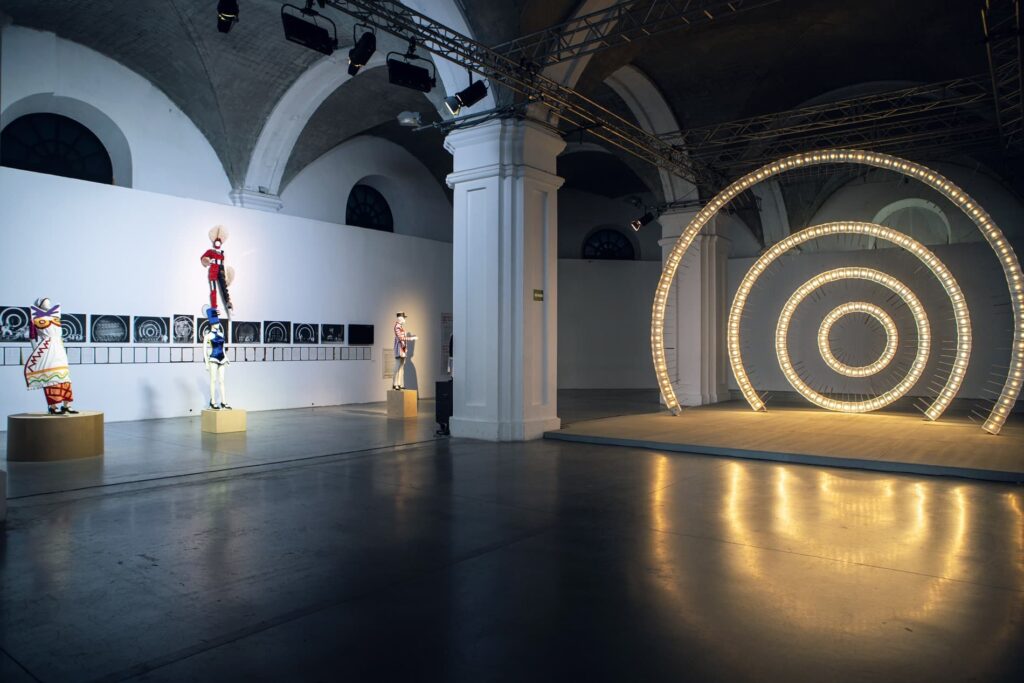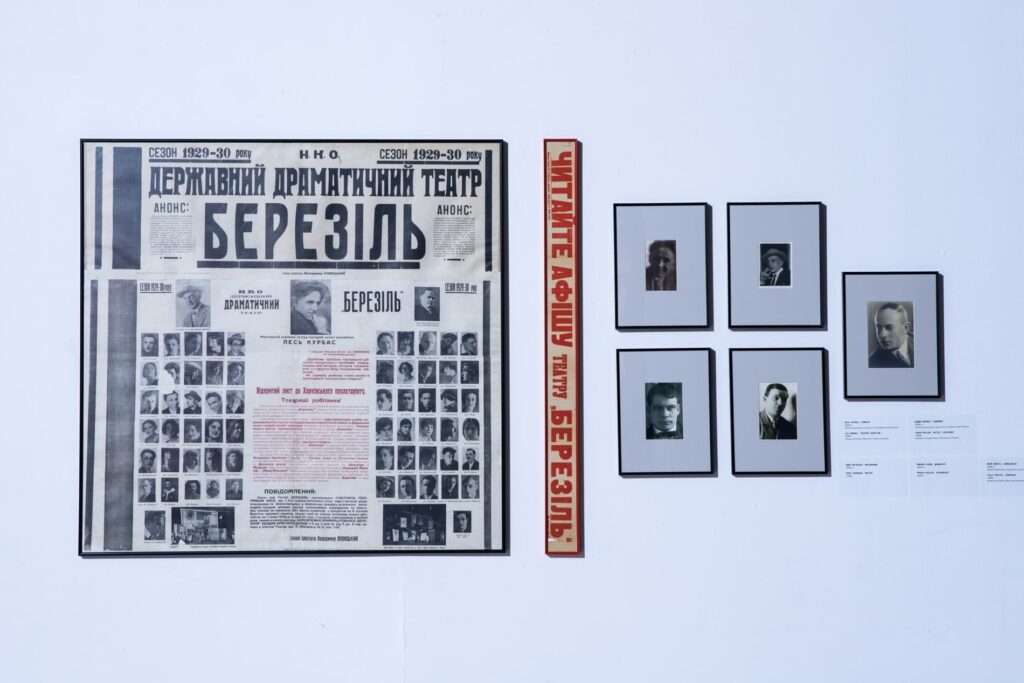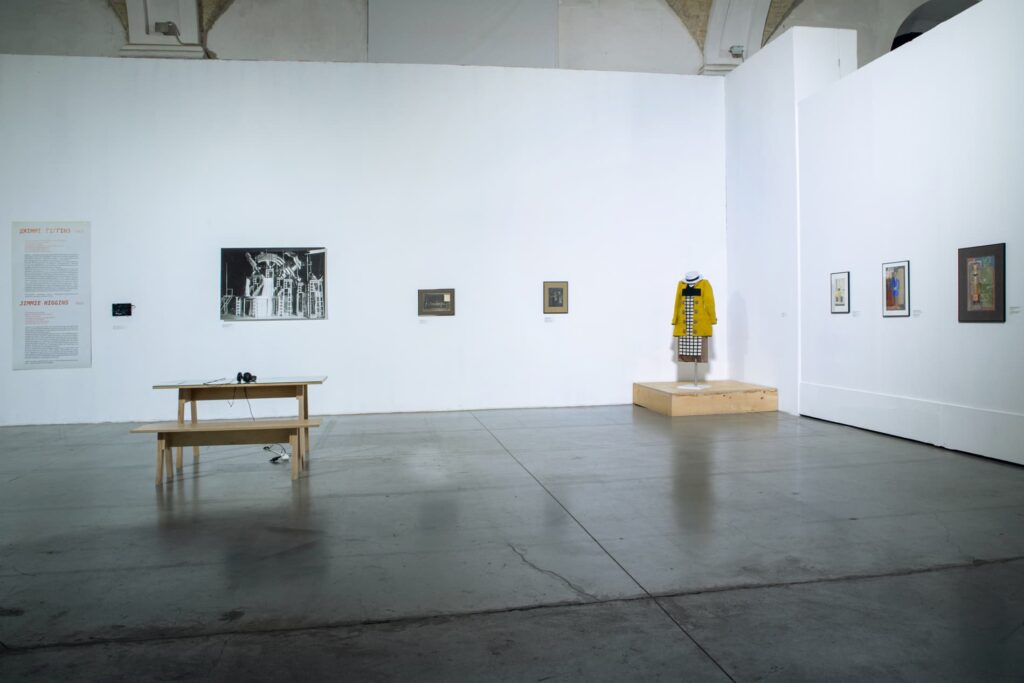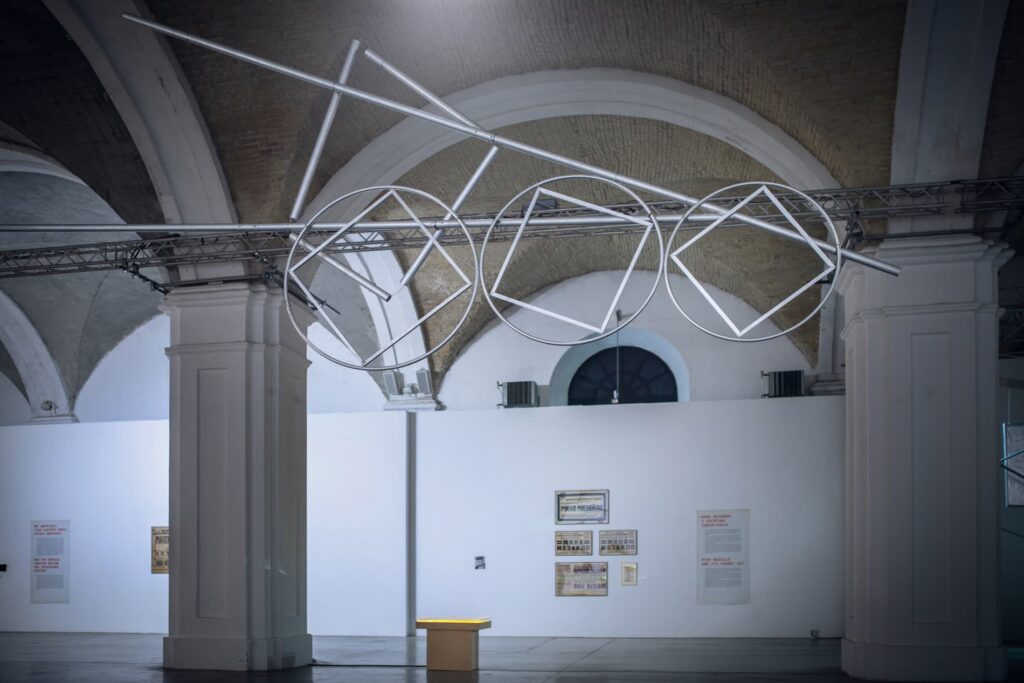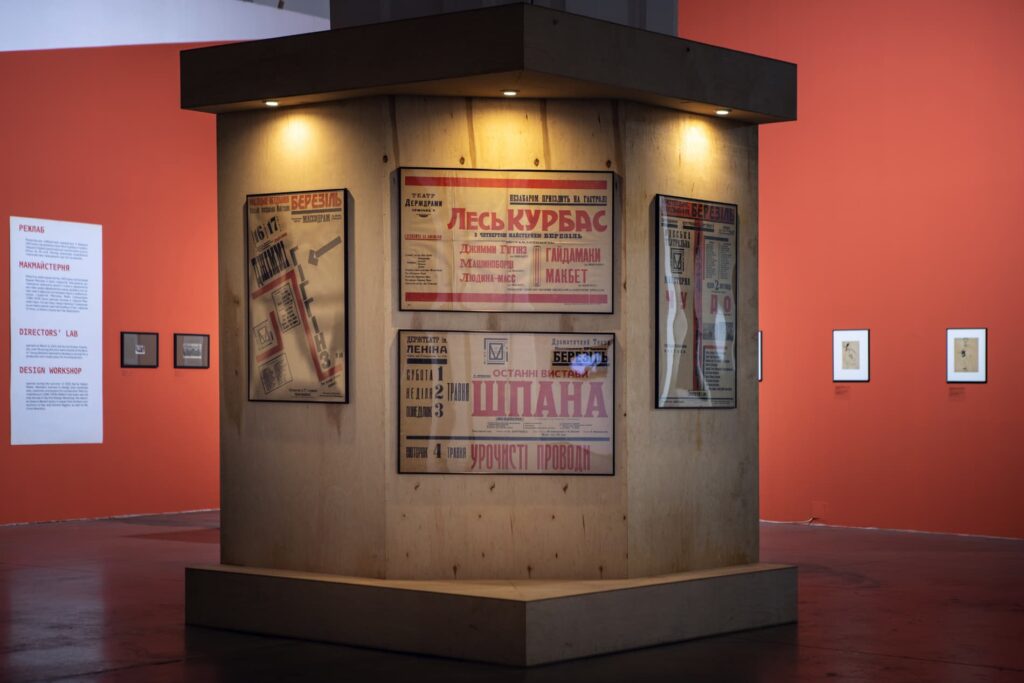October 17 – December 02, 2018
Curators:
Virlana Tkacz, theater director, writer, director of the Yara Arts Group
Tetiana Rudenko, chief curator of the Museum of Theater, Music and Cinema of Ukraine
Waldemart Klyuzko, artist, curator of art projects
Organizers:
- Mystetskyi arsenal
- Museum of Theater, Music and Cinema of Ukraine
- Yara Arts Group (New York)
Kurbas: New Worlds examines what Les Kurbas really did as a theatre director. It is presented in two sections. The first is devoted to Kurbas’s experimental work with his company — the Berezil Artistic Association — in Kyiv (1922–1926). The second features productions of the Berezil National Theatre in Kharkiv, which Kurbas headed from 1926 to 1933.
In the Kyiv section we focus on three shows that addressed fundamental issues in world theatre. Kurbas’s innovative use of movement to create an exploding factory onstage is featured in his production of Georg Kaiser’s Gas (1923). In Jimmie Higgins (1923), Kurbas integrated film and stage action to present the thoughts of a character, revealing the inner and outer reality of a human being. Kurbas’s experiments with film made him one of the major artists at the source of the use of multimedia in theatre. In his 1924 production of Shakespeare’s Macbeth, Kurbas had his actors enter the stage as themselves and become the characters in the play in front of the audience.
The Kharkiv section presents three productions of Berezil National Theatre in Kharkiv. Kurbas’s 1928 production of The People’s Malakhy by Mykola Kulish centered on the musicality of the language in the show. The second production, Hello, This Is Radio 477! (1929), imagined Kharkiv as a city in step with the latest trends in Europe. It was the first jazz musical revue in Ukraine. Kurbas situated the third production, Myna Mazailo, Mykola Kulish’s 1929 comedy about urban stereotypes in Kharkiv, in Meller’s cosmic set to expose the impact the past and future can have on our daily decisions.
Kurbas collaborated with designer Vadym Meller, who created sets that resemble sculptures or installations rather than typical theatre decor. Meller’s constructions formed complex, multilevel places for action that did not adhere to a single-point perspective, but were fragmentary planes similar to those used by Cubists and Supermatists.The exhibition features Vadym Meller’s set model for several Les Kurbas’ productions.
In 1923 a Theatre Museum was founded as part of Kurbas’s Berezil Artistic Association to preserve the history of Ukrainian theatre and document current developments. When the Berezil moved to Kharkiv in 1926, the Theatre Museum became an independent institution. And the exhibition is based on the Museum of Theater, Music and Cinema of Ukraine collection, which is the largest collection of items related to Berezil. The exhibit includes the original set model and costume, sketches, posters, director’s scripts, documentary photographs from the Theatre Museum’s collection. Yara Arts Group has created the installations which bring Les Kurbas’s directorial concepts to life.
Photo by Yevhen Nikiforov.
